|
On May 7, 2020 the Program in Jewish Culture & Society held a virtual panel discussion of the Netflix mini-series Unorthodox, a fictionalized adaptation of Deborah Feldman’s eponymous 2012 memoir, Unorthodox: The Scandalous Rejection of my Hasidic Roots. The conversation that unfolded during the virtual panel offered insights regarding mainstream society’s curiosity toward Haredi Jewish communities and analyzed the way that the aesthetics and narrative of Unorthodox play into our own expectations and anxieties that surround such groups. The event had over 175 attendees and was moderated by Dara E. Goldman (Director, Program in Jewish Culture & Society) and featured brief presentations by David Myers (UCLA), Nomi Stolzenberg (USC), and Rachel S. Harris (U of I) before opening for a discussion moderated by Liat Maggid Alon (Israel Institute Visiting Scholar, U of I). Unorthodox begins with Esther “Esty” Shapiro (Shira Haas) preparing to leave her Brooklyn apartment with only her ID, a small fold of Euros, and an unframed photograph of her Grandmother. As the four-part series unfolds, we see both where Esty is heading and where she has been. Esty is running from the insular society that she was raised within to make a new life for herself in Berlin. Through a narrative that interweaves the past and the present, the series follows Esty as she negotiates her own ambitions and desires with her position as a woman in a Haredi Jewish community. Esty enters an arranged marriage with Yakov “Yanky” Shapiro (Amit Rahav), which is marked by a lavish and elaborately filmed Haredi wedding. In the months after their marriage, Esty and Yanky experience difficulty in their sex life and struggle to conceive. This is regarded largely as a personal and moral failure on Esty’s part, and she becomes increasingly suffocated by her husband’s and community’s expectations for her. Esty and Yanky continue their attempts to have sex according to Haredi traditions, and a year into their marriage she finally does become pregnant, but only after a particularly painful sexual encounter. It is at this point where the flashbacks to her life in Satmar catch up to her present. Esty, now pregnant, leaves her marriage and her home to seek out a kind of freedom that had thus far been off limits to her. Although much of the series positions Esty’s Satmar life and her life in Berlin in opposition to each other, the contributions by Myers, Stolzenberg, and Harris reveal that the most compelling moments of the series resist such a neat framing. David Myers began by offering a brief history of Haredi, popularly referred to as Ultra-Orthodox, Judaism and noted that it developed as a response to modern Jewish Orthodoxy, which sought to create a fusion of traditional religious learning and science. In the 19th century, prior to adopting the label “Haredi,” the community self-identified as traditionalists who were resistant to forms of modernization. They displayed such protest through their modest mode of dress and an acquisition of traditional languages, like Yiddish, two signs that are used heavily within Unorthodox. Myers noted that although Haredi Judaism emphasizes history and tradition, it is a distinctly modern phenomenon. Esty is Satmar, which is a Hasidic group who settled in New York from Hungary following World War II. As such, the Satmar are a unique sect of Haredi Judaism, as they are mostly descendants of Holocaust survivors. Deborah Feldman, in the documentary Making Unorthodox, notes that this sets them apart from other Hasidic communities because their identity was solidified in relation to the Holocaust and emphasizes that the community’s structure was founded by those living with and processing their lived and inherited traumas. While many who embrace the term “Haredi” see themselves as direct descendants of pre-modern Jews, Myers emphasized that ancestral Jewish figures, manners of dress, and rituals did not resemble those of contemporary Ultra-Orthodox communities, and in many ways, Haredi Judaism can be understood as an “invention of tradition.” Hasidic Jewish communities have long been a subject of interest for their unique manner of dress, rituals, and their insularity. Myers suggested that for those outside the religion, Haredi Jews evoke a nostalgic image of Judaism, one akin to the aesthetic of Fiddler on the Roof and a romantic idea of life in a European Jewish shtetl. This depiction often aligns Haredi Judaism with a sense of Jewish authenticity. This depiction, which is at play in Unorthodox, can yield a one-dimensional view of Haredi Jews and flattens a largely diverse community. Nomi Stolzenberg further emphasized the ways in which Haredi communities in New York are a modern development and largely came to be by benefitting from property laws in the United States. As such, Stolzenberg argued that such communities and their ability to form local governments are a “quintessentially American phenomenon.” She noted that “the features of the community that appear to be most at odds with American values, and appear most authentically Jewish, arose because of the American political system, not despite it.” In this respect, contemporary Haredi communities share similarities to other, smaller insular religious communities like the Shakers and Mormons, which also boast a certain degree of political autonomy in the U.S. These communities, Stolzenberg observed, share two points of similarity: first, they reject mainstream sexual and marital practices, and second, they gained stability as associations of private property owners. These elements—specific sexual and martial rituals and attachments to private property that lead to political empowerment—are also distinctly modern. They were not, for example, a part of life in a European shtetl that Haredi communities, at times, appear to imitate. Within Unorthodox, the heteropatriarchal dimension of this power is emphasized, especially when we understand the series within a tradition of narratives about young women escaping from Ultra-Orthodox societies. Rachel Harris situated Unorthodox within a lineage of tales of sexual captivity that can be traced back to the 17th century. (While the series is based off Feldman’s memoir and personal experiences, it is a work of fiction and largely diverges from her personal account.) The series has a thriller-like quality and is geared toward secular audiences who are curious about Haredi communities. And while the series is both aesthetically and emotionally rich, it also rehearses an assumption that those who remain in the community are too indoctrinated to see their own oppression. This representation forecloses the possibility of other forms of agency for women within Haredi communities, and erases feminisms within Haredi communities that do not fit the mainstream norms. Unorthodox also follows many of the visual and atmospheric conventions of other films about escape that emphasize characters’ emotional experiences of isolation. These elements include a limited soundtrack, sparse dialogue, and a muted color palette. As a comparison, Harris discussed the film Fill the Void (2013), written and directed by Rama Burshtein, which depicts the quotidian elements of the Haredi community and represents it as a warm, sociable space where women have fulfilling friendships and distinct forms of agency. Although Esty has few intimate social connections, she is not necessarily alone, nor does she have any sense of privacy. The subject of Esty’s difficulty in conceiving a child after her marriage becomes the subject of public discussion and furthers her sense of isolation. The interest in Esty’s sexual life is not limited only to the content of the series, it also seems to dictate many of the series’ aesthetic choices. Harris pointed out that much of the series hinges on Esty’s sexual life and her own sexuality, even as Esty is depicted as child-like. The clothing choices, casting, and scenery emphasize Esty’s petite frame and, by extension, her innocence. At the same time, scenes like those shot in the Mikvah, an immersive bath taken to achieve religious purity, take on a voyeuristic perspective that engages viewers’ curiosity by offering a highly-sexualized, taboo portrayal of a woman who is associated with modesty and conservatism. The emphasis on Esty’s ability to have sex and eventually conceive is not only important to satisfy her expectations as a wife, but also because of the larger pressure within the Satmar community to reproduce. The weight of this imperative is made clear in Unorthodox during a scene when Esty discusses how painful sex is for her with her aunt. Etsy, clearly frustrated, says that non-Jewish couples must watch a YouTube video on how to properly have sex (she is told later by a Haredi sex therapist that she is experiencing pain due to vaginismus). Her aunt clucks at remark and retorts, “Jewish women have ten times as many babies as non-Jewish women…You think they had YouTube in the Old Country? In Hungary? In the displaced persons camp where Grandpa married Grandma?” With this mention of the trauma that anchors their community, the mood of the scene changes. Esty goes quiet and her eyes well up with tears. This exchange emphasizes the multi-layered reasons that Esty must have children. Not only does her marriage and social status depend on it, but it also fulfills the Satmar community’s higher pursuit of Jewish repopulation after the Holocaust. Esty is still not pregnant after a year of marriage, and sex with Yanky remains incredibly painful for her. The community perceives her as an unsatisfactory wife, one who is unable to sexually gratify her husband or “make him feel like a king.” And while externally Esty is regarded as barren, viewers are privy to a different sort of fertility that emerges in the form of her suppressed artistic talents, her love of piano and a masterful ability to sing. Harris noted that the barren/fertile binary also fits within the genre convention of escape narratives, wherein a protagonist’s suppressed creativity is released upon having a pleasurable sexual encounter with a non-Jewish man. In Unorthodox, this very plot unfolds when Esty meets Robert (Aaron Altaras), a music student that she meets in a coffee shop. Harris observed that it is not just sex with a secular man, but also the protagonist’s encounter with the secular world that pushes her along her path to self-discovery. In Unorthodox, the secular world is represented by an idealized depiction of Berlin and is akin to a “type of Oz,” a world of color that stands in contrast to the grayscale of Esty’s previous life. Berlin is portrayed as a multicultural, accepting society where all forms of self-expression are welcome. Harris argued that this characterization of Berlin is intended to bolster our belief in mainstream society. As much as the series engages our curiosity about Ultra-Orthodox life, the show also reaffirms our belief that modern life can offer a path to self-actualization and individuated freedom. In her first days in Berlin, Esty befriends a group of racially and ethnically diverse music students who quickly embrace her and bring her to Großer Wannsee, a lake just outside of the city. The visit to the lake is a pivotal experience for Esty, as she strips off her layers of clothing and wig to reveal her shaved head. The scene is a renewal, what Rachel Syme has called “both a sacrilege and a baptism,” in a way that is markedly different from the cleansing scene that takes place at the Mikvah. When Esty pulls off her wig, the iconographies associated with the image of the shaved head converge: a sign of her status as a married Satmar woman, a symbol of the Holocaust, and a chic hairstyle associated with an alternative urban life. Before she steps into the water, however, Robert points out matter-of-factly that it was here where the 1942 Wannsee Conference was held and where National Socialist leaders decided to execute Jewish communities, homosexual people, and other marginalized populations. Esty in a horrified tone responds, “And you swim in this lake?” Robert shrugs and replies, “Well, a lake is just a lake.” This brief exchange highlights the diverging ways that the Satmar community and young Berliners have reconciled their relation to the Holocaust, and that memory can be attached to or disassociated from the surrounding landscape and architecture. In the conclusion of the event, Stolzenberg, Harris, and Myers discussed the portrayal of Berlin as a multicultural urban center full of cool and fashionable young people. While this image of Berlin existed long before the series aired, this representation papers over rising nationalist movements in Germany in favor of a color-blind view of the city. Harris and Stolzenberg point out, however, that the Holocaust is very much linked to xenophobic sentiments that target refugees, migrants, Muslims, and people of color both in Berlin and globally. Ann Winger, the series creator and Executive Producer, has reflected that “there’s a kind of doubling-back on history in this show,” and characterizes Esty’s departure from her Satmar community to Germany as a return to the origin site of their trauma. Alexa Karolinski, the co-creator and writer, has called this return “den Kreis schließen,” or a means of coming full circle. Myers, Harris, and Stolzenberg, instead, offered insights that urge us to keep this circle open.  Caption: Esty and Yanky on their wedding day. (Anika Molnar/Netflix) Caption: Esty and Yanky on their wedding day. (Anika Molnar/Netflix) On May 7, 2020 the Program in Jewish Culture & Society held a virtual panel discussion of the Netflix mini-series Unorthodox, a fictionalized adaptation of Deborah Feldman’s eponymous 2012 memoir, Unorthodox: The Scandalous Rejection of my Hasidic Roots. The conversation that unfolded during the virtual panel offered insights regarding mainstream society’s curiosity toward Haredi Jewish communities and analyzed the way that the aesthetics and narrative of Unorthodox play into our own expectations and anxieties that surround such groups. The event had over 175 attendees and was moderated by Dara E. Goldman (Director, Program in Jewish Culture & Society) and featured brief presentations by David Myers (UCLA), Nomi Stolzenberg (USC), and Rachel S. Harris (U of I) before opening for a discussion moderated by Liat Maggid Alon (Israel Institute Visiting Scholar, U of I). Unorthodox begins with Esther “Esty” Shapiro (Shira Haas) preparing to leave her Brooklyn apartment with only her ID, a small fold of Euros, and an unframed photograph of her Grandmother. As the four-part series unfolds, we see both where Esty is heading and where she has been. Esty is running from the insular society that she was raised within to make a new life for herself in Berlin. Through a narrative that interweaves the past and the present, the series follows Esty as she negotiates her own ambitions and desires with her position as a woman in a Haredi Jewish community. Esty enters an arranged marriage with Yakov “Yanky” Shapiro (Amit Rahav), which is marked by a lavish and elaborately filmed Haredi wedding. In the months after their marriage, Esty and Yanky experience difficulty in their sex life and struggle to conceive. This is regarded largely as a personal and moral failure on Esty’s part, and she becomes increasingly suffocated by her husband’s and community’s expectations for her. Esty and Yanky continue their attempts to have sex according to Haredi traditions, and a year into their marriage she finally does become pregnant, but only after a particularly painful sexual encounter. It is at this point where the flashbacks to her life in Satmar catch up to her present. Esty, now pregnant, leaves her marriage and her home to seek out a kind of freedom that had thus far been off limits to her. Although much of the series positions Esty’s Satmar life and her life in Berlin in opposition to each other, the contributions by Myers, Stolzenberg, and Harris reveal that the most compelling moments of the series resist such a neat framing. Caption: Esty and Yanky on their wedding day. (Anika Molnar/Netflix) David Myers began by offering a brief history of Haredi, popularly referred to as Ultra-Orthodox, Judaism and noted that it developed as a response to modern Jewish Orthodoxy, which sought to create a fusion of traditional religious learning and science. In the 19th century, prior to adopting the label “Haredi,” the community self-identified as traditionalists who were resistant to forms of modernization. They displayed such protest through their modest mode of dress and an acquisition of traditional languages, like Yiddish, two signs that are used heavily within Unorthodox. Myers noted that although Haredi Judaism emphasizes history and tradition, it is a distinctly modern phenomenon. Esty is Satmar, which is a Hasidic group who settled in New York from Hungary following World War II. As such, the Satmar are a unique sect of Haredi Judaism, as they are mostly descendants of Holocaust survivors. Deborah Feldman, in the documentary Making Unorthodox, notes that this sets them apart from other Hasidic communities because their identity was solidified in relation to the Holocaust and emphasizes that the community’s structure was founded by those living with and processing their lived and inherited traumas. While many who embrace the term “Haredi” see themselves as direct descendants of pre-modern Jews, Myers emphasized that ancestral Jewish figures, manners of dress, and rituals did not resemble those of contemporary Ultra-Orthodox communities, and in many ways, Haredi Judaism can be understood as an “invention of tradition.” Hasidic Jewish communities have long been a subject of interest for their unique manner of dress, rituals, and their insularity. Myers suggested that for those outside the religion, Haredi Jews evoke a nostalgic image of Judaism, one akin to the aesthetic of Fiddler on the Roof and a romantic idea of life in a European Jewish shtetl. This depiction often aligns Haredi Judaism with a sense of Jewish authenticity. This depiction, which is at play in Unorthodox, can yield a one-dimensional view of Haredi Jews and flattens a largely diverse community. Nomi Stolzenberg further emphasized the ways in which Haredi communities in New York are a modern development and largely came to be by benefitting from property laws in the United States. As such, Stolzenberg argued that such communities and their ability to form local governments are a “quintessentially American phenomenon.” She noted that “the features of the community that appear to be most at odds with American values, and appear most authentically Jewish, arose because of the American political system, not despite it.” In this respect, contemporary Haredi communities share similarities to other, smaller insular religious communities like the Shakers and Mormons, which also boast a certain degree of political autonomy in the U.S. These communities, Stolzenberg observed, share two points of similarity: first, they reject mainstream sexual and marital practices, and second, they gained stability as associations of private property owners. These elements—specific sexual and martial rituals and attachments to private property that lead to political empowerment—are also distinctly modern. They were not, for example, a part of life in a European shtetl that Haredi communities, at times, appear to imitate. Within Unorthodox, the heteropatriarchal dimension of this power is emphasized, especially when we understand the series within a tradition of narratives about young women escaping from Ultra-Orthodox societies. Caption: Esty shaving her head in preparation for her marriage to Yanky. (Anika Molnar/Netflix) Rachel Harris situated Unorthodox within a lineage of tales of sexual captivity that can be traced back to the 17th century. (While the series is based off Feldman’s memoir and personal experiences, it is a work of fiction and largely diverges from her personal account.) The series has a thriller-like quality and is geared toward secular audiences who are curious about Haredi communities. And while the series is both aesthetically and emotionally rich, it also rehearses an assumption that those who remain in the community are too indoctrinated to see their own oppression. This representation forecloses the possibility of other forms of agency for women within Haredi communities, and erases feminisms within Haredi communities that do not fit the mainstream norms. Unorthodox also follows many of the visual and atmospheric conventions of other films about escape that emphasize characters’ emotional experiences of isolation. These elements include a limited soundtrack, sparse dialogue, and a muted color palette. As a comparison, Harris discussed the film Fill the Void (2013), written and directed by Rama Burshtein, which depicts the quotidian elements of the Haredi community and represents it as a warm, sociable space where women have fulfilling friendships and distinct forms of agency. Although Esty has few intimate social connections, she is not necessarily alone, nor does she have any sense of privacy. The subject of Esty’s difficulty in conceiving a child after her marriage becomes the subject of public discussion and furthers her sense of isolation. The interest in Esty’s sexual life is not limited only to the content of the series, it also seems to dictate many of the series’ aesthetic choices. Harris pointed out that much of the series hinges on Esty’s sexual life and her own sexuality, even as Esty is depicted as child-like. The clothing choices, casting, and scenery emphasize Esty’s petite frame and, by extension, her innocence. At the same time, scenes like those shot in the Mikvah, an immersive bath taken to achieve religious purity, take on a voyeuristic perspective that engages viewers’ curiosity by offering a highly-sexualized, taboo portrayal of a woman who is associated with modesty and conservatism. The emphasis on Esty’s ability to have sex and eventually conceive is not only important to satisfy her expectations as a wife, but also because of the larger pressure within the Satmar community to reproduce. The weight of this imperative is made clear in Unorthodox during a scene when Esty discusses how painful sex is for her with her aunt. Etsy, clearly frustrated, says that non-Jewish couples must watch a YouTube video on how to properly have sex (she is told later by a Haredi sex therapist that she is experiencing pain due to vaginismus). Her aunt clucks at remark and retorts, “Jewish women have ten times as many babies as non-Jewish women…You think they had YouTube in the Old Country? In Hungary? In the displaced persons camp where Grandpa married Grandma?” With this mention of the trauma that anchors their community, the mood of the scene changes. Esty goes quiet and her eyes well up with tears. This exchange emphasizes the multi-layered reasons that Esty must have children. Not only does her marriage and social status depend on it, but it also fulfills the Satmar community’s higher pursuit of Jewish repopulation after the Holocaust. Esty is still not pregnant after a year of marriage, and sex with Yanky remains incredibly painful for her. The community perceives her as an unsatisfactory wife, one who is unable to sexually gratify her husband or “make him feel like a king.” And while externally Esty is regarded as barren, viewers are privy to a different sort of fertility that emerges in the form of her suppressed artistic talents, her love of piano and a masterful ability to sing. Harris noted that the barren/fertile binary also fits within the genre convention of escape narratives, wherein a protagonist’s suppressed creativity is released upon having a pleasurable sexual encounter with a non-Jewish man. In Unorthodox, this very plot unfolds when Esty meets Robert (Aaron Altaras), a music student that she meets in a coffee shop. Caption: Esty with Robert, her secular love interest, at Großer Wannsee. (Anika Molnar/Netflix) Harris observed that it is not just sex with a secular man, but also the protagonist’s encounter with the secular world that pushes her along her path to self-discovery. In Unorthodox, the secular world is represented by an idealized depiction of Berlin and is akin to a “type of Oz,” a world of color that stands in contrast to the grayscale of Esty’s previous life. Berlin is portrayed as a multicultural, accepting society where all forms of self-expression are welcome. Harris argued that this characterization of Berlin is intended to bolster our belief in mainstream society. As much as the series engages our curiosity about Ultra-Orthodox life, the show also reaffirms our belief that modern life can offer a path to self-actualization and individuated freedom. In her first days in Berlin, Esty befriends a group of racially and ethnically diverse music students who quickly embrace her and bring her to Großer Wannsee, a lake just outside of the city. The visit to the lake is a pivotal experience for Esty, as she strips off her layers of clothing and wig to reveal her shaved head. The scene is a renewal, what Rachel Syme has called “both a sacrilege and a baptism,” in a way that is markedly different from the cleansing scene that takes place at the Mikvah. When Esty pulls off her wig, the iconographies associated with the image of the shaved head converge: a sign of her status as a married Satmar woman, a symbol of the Holocaust, and a chic hairstyle associated with an alternative urban life. Caption: Esty floating in Großer Wannsee after arriving in Berlin. (Anika Molnar/Netflix) Before she steps into the water, however, Robert points out matter-of-factly that it was here where the 1942 Wannsee Conference was held and where National Socialist leaders decided to execute Jewish communities, homosexual people, and other marginalized populations. Esty in a horrified tone responds, “And you swim in this lake?” Robert shrugs and replies, “Well, a lake is just a lake.” This brief exchange highlights the diverging ways that the Satmar community and young Berliners have reconciled their relation to the Holocaust, and that memory can be attached to or disassociated from the surrounding landscape and architecture.
0 Comments
4th Annual Graduate Symposium in Memory Studies
106 Main Library for all panels and talks Lucy Ellis Lounge, Ground Floor of FLB, 707 South Matthews for coffee and lunch And via Zoom Friday, 25 March, 2022 9am-5pm Lunch will be provided for all participants 9 – 10 am, Here, There, and Nowhere: Emplacing Memory in the Present Zach Simon, “Place and Memory in Poetry” Savannah Block, “The National and Local Positionality of UIUC’s Center for Writing Studies: A Semi-Oral History” (via video) Adele Isyanamanova, “Emancipation Park and The Shadowcatcher: Themes of Grief and Celebration in Black Commemorative Landscapes” Respondent: Dilara Caliskan 10 – 10:15 am, Coffee Break 10:15 – 11:30 am, Almost, Elsewhere, Meanwhile: Precarious Subjects and Postponed Pasts Finola McMahon, “Queer Geosemiotics: Queering the Map and the Creation of Community Memory” Laura Olbrich, “Haunted by Hanau, Haunted by History: The Precarity of (Non-White) Lives in the German Context” Basil O Agu, “The future of Biafra Nostalgia: A Criticism of Boym’s Typology” Azlan Smith, “Shadowtide: Hiding, Finding, and Memory in a Queer Manuscript” Respondent: Ragini Chakraborty 11:30 – 11:45 am, Coffee Break 11:45 – 1:00 pm, Unearthing the Unearthly: Grief, Gravity, and Commemoration Calandra Warren, “Embodied Theology, Impossible Grief: Memory, Loss, Mourning, & Melancholy in Toni Morrison’s Paradise” Taisuke Wakabayashi, “Kant, Biopolitics, and Care Ethics: In the event of HIV/AIDS epidemic in the United States” Michael Knierim, “Rituals of Remembrance and Forgetting in Greco-Roman Epics of the Argonauts” Kaleb Ostraff, “(Mis)Archiving the Archive” Respondent: Claire Branigan 1 – 1:45 pm, Lunch Break 1:45 – 3:00 pm, What Memory Forgot: Ethics and Others in a Dis/oriented Past Felix Ayandobe, “‘Rhineland Bastards’ and the Memory of Transnational Racial Discrimination in Hans Massaquoi’s Destined to Witness” Amelia Ino, “The Implicated Reader: Negotiating responsibility in settler colonial legacies in Eden Robinson’s Monkey Beach” Jean Carlos Valentin Velilla, “(Dis)orienting Pedagogical Memory: The Specter of Queer Women in Roald Dahl’s Matilda” Naomi Ellis, “The (Im)possibility of Apology: Japan’s ‘Impenitence’ and the Problem of Mourning After Defeat” Respondent: Naomi Taub 3 – 4:00 pm, Voices of Memory, Azlan Smith and team 4 – 5:00 pm, Screen Memories: Identity and Narrative Ambivalence in Global Cinema Eliot Chen, “The Perverse Desires of East Asian Modernities: Ugetsu and The White-Haired Girl in the Mid-Twentieth Century” Nubras Samayeen, "Post-71: photographic ambivalences, archives, and the construction of a national identity of Bangladesh" Miya Moriwaki, “Unearthing Narrative Intersections: Grounds for Decolonial Solidarities and a Place-Based Study of History” Respondent: Claire Baytas 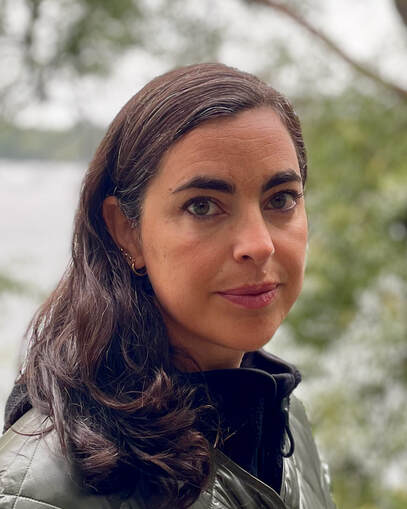 By Helaine Silverman Photos by Hendrick Zeitler On October 26, 2021 Swedish scholar Rebecka Katz Thor zoomed in for an Initiative in Holocaust, Genocide, Memory Studies (HGMS) faculty seminar to present a fascinating talk entitled “Remember to Life: Vulnerable Memory in a Prospective Monument, Memorial, and Museum.” Her talk considered Sweden’s official plans for a Holocaust Museum as well as an art association’s push to remember Swedish colonialism in the Caribbean, and a grassroots movement to memorialize victims of a racist serial killer. This three-year post-doctoral project builds on her earlier doctoral research. In her 2018 dissertation – Beyond the Witness. Holocaust Representation and the Testimony of Images. Three Films by Yael Hersonski, Harun Farocki and Eyal Sivan – Dr. Katz Thor undertook a theoretically sophisticated analysis of frame, voice, text and narration and the concept of witnessing and testimony, including as the Nazis showed their genocide. She is interested in virtual presence, the use of holograms as eternal witnesses, grieving and what lives are grievable, the relationship between time and memory, forms of remembrance and moral remembrance. Her new Holocaust engagement is exemplified by the object seen below, created by visual artist Lenke Rothman (died 2008), a Hungarian Jew who survived the Holocaust after being in both Auschwitz and Bergen-Belsen. When freed, Rothman was taken to Sweden where she studied art and became a citizen (see also here). Rothman’s words upon the birth of her son, were that this “miracle remind[ed] me of life, of everything I had forgotten.” This resonates with the Rosh Hashanah and Yom Kippur concepts of “remember to life”, “remember us for life”, as well as the notorious execution of Hungarian Jews along the banks of the Danube River, an event that today is memorialized with iron shoes on the very spot, as well as the display, behind glass, at Auschwitz-Birkenau of a deep pile of shoes of the victims of the camps. Rothman has placed in her glass box a little girl’s dress shoes in the style of that era (thus remembrance and trauma) as well as a pair of new, modern, colorful shoes (a future). Rothman invites us to perceive multiple meanings about how the past is always present. Rothman’s conjoined life experience and art corpus are the point of entry for Dr. Katz Thor to propose and consider the notion of vulnerable. Vulnerable lives. Vulnerable memory. Dr. Katz Thor suggests that all three projects (the proposed Holocaust Museum, the French Lot, and the serial killer memorial) are engaging with an unhealed wound. This commonality (regardless of vast differences in scale) enables her to investigate how vulnerability is connected to questions of commemoration, cultural heritage and public space. She recognizes the difficulty of dealing with unhealed wounds, unhealed victims, unhealed society and with the denial or, at least, neglecting and minimizing of difficult history. The impetus for a Holocaust museum came in 2018 from Sweden’s Prime Minister, Stefan Lofven. Unlike the other two projects that Dr. Katz Thor is studying, this project will likely be accomplished in the near future. The Holocaust Museum is well funded by the Swedish government. New museums are particularly interesting as research venues because as they come into being they can be studied. Dr. Katz Thor is conducting, in essence, an institutional ethnography with the many individuals and direct and indirect stakeholder groups involved with the official Swedish Holocaust Museum as it is happening. She is tracking the process, as she is with the other two initiatives. She observes how all three engage with vulnerable lives. The idea of a Holocaust Museum in Sweden, with collections and exhibitions is new. She asks why this is happening now and what does that mean? She referred to “a lot of politics behind this,” noting that around the world it is governments that regulate who will be “grievable” and who will not. This impacts public space and the commemorative public projects placed in it. We understand accountability and responsibility/culpability. It is recognition that is at play. Does recognition, for instance, require a physical presence? And if we “do it once,” does that put an end to “it”? Dr. Katz Thor says no. For all of the cases in her new project – and others elsewhere that would be conceptually related – we are dealing with a process and, thus, with “vulnerable time” (think about this in terms of Michael Herzfeld’s “monumental time”). The script of the Holocaust Museum is not a comprehensive historical account for learning about the Holocaust. As unpacked thus far by Dr. Katz Thor, the museum will be about individual survivor stories and their memorabilia. The proposal for the museum came from a victim of the genocide and survivor stories of victims will be the core frame for the museum. It will be a museum to/of the victims – those who died, those who did not. But will Sweden in the Nazi Period be discussed in the museum? The Director appears to be interested but this has not been translated into public pronouncements. Dr. Katz Thor says that from the official Swedish government perspective, the new museum “is a way of honoring Swedish Jewish survivors.” They are trying to find survivors to interview and to make interactive biographies of them. This is an idea imported from the U.S. and indicates the museum’s intended focus on survivor stories. The museum-in-progress is trying to create a collection, desperately trying to find artifacts. But Dr. Katz Thor argues that the museum should not be focused solely on survivor stories but should tell a more complete story. Examples of what would need to be referenced include:
Dr. Katz Thor laments that in her attendance at the museum meetings, they tend not to discuss “What kind of museum does this make?” “What kind of museum do we want?” There are many Holocaust museums and many are twenty years old. The fundamental questions of “what kind of museum will we be – and why” and “how do we do this” are not yet being asked. Nor is the museum focused on the very many dead: the museum thus far has no associated memorial. An early discussion twenty years ago was “Let’s make a genocide museum and deal with human rights. A Holocaust museum is too narrow. This is not Swedish history. ” Clearly, that viewpoint changed – but not for everyone. Indeed, Sweden honors Raoul Wallenberg, who saved thousands of Jews, with a memorial in Stockholm. But the memorial was defaced by spray paint less than twenty-four hours after being inaugurated in 2001, likely by neo-Nazis whose groups are active today. We may anticipate that if the Holocaust museum does indeed deal with Swedish history, it will be controversial. With regard to acknowledging colonialism, Sweden obtained Saint Barthélemy (St. Barts, in the Caribbean) from France in 1784, in exchange for trading rights in Göteborg (Gothenburg), a port city: that free trade zone is “the French Lot.” Sweden controlled Saint Barthélemy for almost a century (until 1878) during which time it was a duty-free port, including for the slave trade, which disembarked African slaves on the island to work in cacao fields and elsewhere on the island, as well as shipping them beyond. Indeed, Sweden was a major purveyor of iron chains for the slave trade. It is this history that, Dr. Katz Thor explained, is largely unknown and completely untaught in Sweden. But a proposed new art installation in Göteborg wants to deal with this history. The Göteborg International Biennal for Contemporary Art has invited contemplation of the role of art in revealing Sweden’s colonial history, which included involvement in the slave trade. Dr. Katz Thor has observed panel discussions among the Public Art Agency Sweden, artists, and citizens. The major questions she addresses are: “Should there be a permanent monument to mark the slave history of the place? If so, who should guide the process, and with what consultations?” As such, “The French Lot” can be compared to the decolonizing effort of many museums as well as the rescripting of contested public space and removal of controversial statues. The third component of Dr. Katz Thor’s new research occurs at a smaller scale. It concerns Peter Mangs, a White racist serial killer who, between 2003-2010 murdered three people and attempted to kill twelve others. His stated goal was to “ignite a race war” by heightening racial tension. His victims were Black, Muslim, and Roma. His field of operation was Malmö. As Dr. Katz Thor pointed out, Mangs was not included in lists of terrorists and his actions were ignored by the police, the media and the courts – by everyone except the targeted minorities and his white racist compatriots. Dr. Katz Thor discussed the grassroots initiative among minority community activists to create a monument acknowledging the events. The Municipality of Malmö has taken over the project. They have worked with six different artists who have done temporary exhibitions and they hope there will be a permanent monument in 2023. But this is uncertain. Should violent history be hidden or showcased in public space? We are in an era in which there is a global spread of the Black Lives Matter movement. One result is that no longer are the perpetrators of violent acts being permitted to stand in public space. When re-conceived, monuments, memorials and museums can redress anguish long after the event has happened. Dr. Katz Thor says we need “an ethical response to respond to previous wrongdoing … and a production of new memory … and how the majority of a society can take responsibility for the vulnerable lives of the minorities living amongst them.” Thus, she has chosen and problematized three cases of human rights abuses at different stages of project initiation: the government for the Holocaust Museum, an art biennial for the French Lot, and minority community activism for the anti-racism monument. She asks us to contemplate the scale (size, form and where), temporality (when: event and today) and commissioning (who and why) of the three projects and their content. The creation of new commemorative projects is about how we deal with the past. The three projects can be understood in a common framework of how a society assimilates the memory of vulnerable lives through public commemorations. Dr. Katz Thor regards her new project as a contribution to the study of future practices of commemoration, which are compelled to respond ethically to past events and also to play a role in the present as current injustices occur. Moreover, and particular to Sweden, each of the three cases in her research is significant because each challenges Sweden’s complacent national narrative and self-image of the country as professedly neutral during WWII and tolerant, democratic, multicultural, and unmilitaristic (but see the Stockholm University project [you must use Chrome not Safari] here). Based on Dr. Katz Thor’s talk to HGMS, we all look forward to reading the publications resulting from her new work and hopefully to bringing her back at its conclusion. On October 26, 2021 Swedish scholar Rebecka Katz Thor zoomed in for an Initiative in Holocaust, Genocide, Memory Studies (HGMS) faculty seminar to present a fascinating talk entitled “Remember to Life: Vulnerable Memory in a Prospective Monument, Memorial, and Museum.” Her talk considered Sweden’s official plans for a Holocaust Museum as well as an art association’s push to remember Swedish colonialism in the Caribbean, and a grassroots movement to memorialize victims of a racist serial killer. This three-year post-doctoral project builds on her earlier doctoral research. In her 2018 dissertation – Beyond the Witness. Holocaust Representation and the Testimony of Images. Three Films by Yael Hersonski, Harun Farocki and Eyal Sivan – Dr. Katz Thor undertook a theoretically sophisticated analysis of frame, voice, text and narration and the concept of witnessing and testimony, including as the Nazis showed their genocide. She is interested in virtual presence, the use of holograms as eternal witnesses, grieving and what lives are grievable, the relationship between time and memory, forms of remembrance and moral remembrance. Her new Holocaust engagement is exemplified by the object seen below, created by visual artist Lenke Rothman (died 2008), a Hungarian Jew who survived the Holocaust after being in both Auschwitz and Bergen-Belsen. When freed, Rothman was taken to Sweden where she studied art and became a citizen (see also here). Rothman’s words upon the birth of her son, were that this “miracle remind[ed] me of life, of everything I had forgotten.” This resonates with the Rosh Hashanah and Yom Kippur concepts of “remember to life”, “remember us for life”, as well as the notorious execution of Hungarian Jews along the banks of the Danube River, an event that today is memorialized with iron shoes on the very spot, as well as the display, behind glass, at Auschwitz-Birkenau of a deep pile of shoes of the victims of the camps. Rothman has placed in her glass box a little girl’s dress shoes in the style of that era (thus remembrance and trauma) as well as a pair of new, modern, colorful shoes (a future). Rothman invites us to perceive multiple meanings about how the past is always present. Rothman’s conjoined life experience and art corpus are the point of entry for Dr. Katz Thor to propose and consider the notion of vulnerable. Vulnerable lives. Vulnerable memory. Dr. Katz Thor suggests that all three projects (the proposed Holocaust Museum, the French Lot, and the serial killer memorial) are engaging with an unhealed wound. This commonality (regardless of vast differences in scale) enables her to investigate how vulnerability is connected to questions of commemoration, cultural heritage and public space. She recognizes the difficulty of dealing with unhealed wounds, unhealed victims, unhealed society and with the denial or, at least, neglecting and minimizing of difficult history. The impetus for a Holocaust museum came in 2018 from Sweden’s Prime Minister, Stefan Lofven. Unlike the other two projects that Dr. Katz Thor is studying, this project will likely be accomplished in the near future. The Holocaust Museum is well funded by the Swedish government. New museums are particularly interesting as research venues because as they come into being they can be studied. Dr. Katz Thor is conducting, in essence, an institutional ethnography with the many individuals and direct and indirect stakeholder groups involved with the official Swedish Holocaust Museum as it is happening. She is tracking the process, as she is with the other two initiatives. She observes how all three engage with vulnerable lives. The idea of a Holocaust Museum in Sweden, with collections and exhibitions is new. She asks why this is happening now and what does that mean? She referred to “a lot of politics behind this,” noting that around the world it is governments that regulate who will be “grievable” and who will not. This impacts public space and the commemorative public projects placed in it. We understand accountability and responsibility/culpability. It is recognition that is at play. Does recognition, for instance, require a physical presence? And if we “do it once,” does that put an end to “it”? Dr. Katz Thor says no. For all of the cases in her new project – and others elsewhere that would be conceptually related – we are dealing with a process and, thus, with “vulnerable time” (think about this in terms of Michael Herzfeld’s “monumental time”). The script of the Holocaust Museum is not a comprehensive historical account for learning about the Holocaust. As unpacked thus far by Dr. Katz Thor, the museum will be about individual survivor stories and their memorabilia. The proposal for the museum came from a victim of the genocide and survivor stories of victims will be the core frame for the museum. It will be a museum to/of the victims – those who died, those who did not. But will Sweden in the Nazi Period be discussed in the museum? The Director appears to be interested but this has not been translated into public pronouncements. Dr. Katz Thor says that from the official Swedish government perspective, the new museum “is a way of honoring Swedish Jewish survivors.” They are trying to find survivors to interview and to make interactive biographies of them. This is an idea imported from the U.S. and indicates the museum’s intended focus on survivor stories. The museum-in-progress is trying to create a collection, desperately trying to find artifacts. But Dr. Katz Thor argues that the museum should not be focused solely on survivor stories but should tell a more complete story. Examples of what would need to be referenced include:
Dr. Katz Thor laments that in her attendance at the museum meetings, they tend not to discuss “What kind of museum does this make?” “What kind of museum do we want?” There are many Holocaust museums and many are twenty years old. The fundamental questions of “what kind of museum will we be – and why” and “how do we do this” are not yet being asked. Nor is the museum focused on the very many dead: the museum thus far has no associated memorial. An early discussion twenty years ago was “Let’s make a genocide museum and deal with human rights. A Holocaust museum is too narrow. This is not Swedish history. ” Clearly, that viewpoint changed – but not for everyone. Indeed, Sweden honors Raoul Wallenberg, who saved thousands of Jews, with a memorial in Stockholm. But the memorial was defaced by spray paint less than twenty-four hours after being inaugurated in 2001, likely by neo-Nazis whose groups are active today. We may anticipate that if the Holocaust museum does indeed deal with Swedish history, it will be controversial. With regard to acknowledging colonialism, Sweden obtained Saint Barthélemy (St. Barts, in the Caribbean) from France in 1784, in exchange for trading rights in Göteborg (Gothenburg), a port city: that free trade zone is “the French Lot.” Sweden controlled Saint Barthélemy for almost a century (until 1878) during which time it was a duty-free port, including for the slave trade, which disembarked African slaves on the island to work in cacao fields and elsewhere on the island, as well as shipping them beyond. Indeed, Sweden was a major purveyor of iron chains for the slave trade. It is this history that, Dr. Katz Thor explained, is largely unknown and completely untaught in Sweden. But a proposed new art installation in Göteborg wants to deal with this history. Lamppost on the French Lot, Göteborg. Note the chains depicted at the bottom of the image (above). The Göteborg International Biennal for Contemporary Art has invited contemplation of the role of art in revealing Sweden’s colonial history, which included involvement in the slave trade. Dr. Katz Thor has observed panel discussions among the Public Art Agency Sweden, artists, and citizens. The major questions she addresses are: “Should there be a permanent monument to mark the slave history of the place? If so, who should guide the process, and with what consultations?” As such, “The French Lot” can be compared to the decolonizing effort of many museums as well as the rescripting of contested public space and removal of controversial statues. The third component of Dr. Katz Thor’s new research occurs at a smaller scale. It concerns Peter Mangs, a White racist serial killer who, between 2003-2010 murdered three people and attempted to kill twelve others. His stated goal was to “ignite a race war” by heightening racial tension. His victims were Black, Muslim, and Roma. His field of operation was Malmö. As Dr. Katz Thor pointed out, Mangs was not included in lists of terrorists and his actions were ignored by the police, the media and the courts – by everyone except the targeted minorities and his white racist compatriots. Dr. Katz Thor discussed the grassroots initiative among minority community activists to create a monument acknowledging the events. The Municipality of Malmö has taken over the project. They have worked with six different artists who have done temporary exhibitions and they hope there will be a permanent monument in 2023. But this is uncertain. Should violent history be hidden or showcased in public space? We are in an era in which there is a global spread of the Black Lives Matter movement. One result is that no longer are the perpetrators of violent acts being permitted to stand in public space. When re-conceived, monuments, memorials and museums can redress anguish long after the event has happened. Dr. Katz Thor says we need “an ethical response to respond to previous wrongdoing … and a production of new memory … and how the majority of a society can take responsibility for the vulnerable lives of the minorities living amongst them.” Thus, she has chosen and problematized three cases of human rights abuses at different stages of project initiation: the government for the Holocaust Museum, an art biennial for the French Lot, and minority community activism for the anti-racism monument. She asks us to contemplate the scale (size, form and where), temporality (when: event and today) and commissioning (who and why) of the three projects and their content. The creation of new commemorative projects is about how we deal with the past. The three projects can be understood in a common framework of how a society assimilates the memory of vulnerable lives through public commemorations. Dr. Katz Thor regards her new project as a contribution to the study of future practices of commemoration, which are compelled to respond ethically to past events and also to play a role in the present as current injustices occur. Moreover, and particular to Sweden, each of the three cases in her research is significant because each challenges Sweden’s complacent national narrative and self-image of the country as professedly neutral during WWII and tolerant, democratic, multicultural, and unmilitaristic (but see the Stockholm University project [you must use Chrome not Safari] here). Based on Dr. Katz Thor’s talk to HGMS, we all look forward to reading the publications resulting from her new work and hopefully to bringing her back at its conclusion. By Claire Baytaş and Dilara Çalışkan 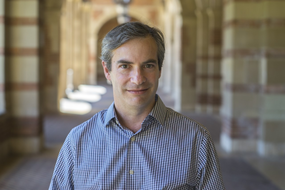 Michael Rothberg, photo by David Wu, UCLA Alan D. Leve Center for Jewish Studies Michael Rothberg, photo by David Wu, UCLA Alan D. Leve Center for Jewish Studies With the onset of the COVID-19 pandemic, the Future of Trauma and Memory Studies Reading Group switched from in-person to online meetings. While we greatly look forward to meeting in person again in the future, the Zoom meeting format has given us special opportunities to invite scholars from different institutions, countries, and continents to join in our reading group sessions. Recently, we were honored to host Professor Michael Rothberg from UCLA to discuss his most recent book, The Implicated Subject: Beyond Victims and Perpetrators (Stanford UP, 2019) in a special session held February 12, 2021. Our session was attended by students and professors from UIUC, UCLA, and Goethe-University Frankfurt, in addition to a myriad of other scholars with whom we are connected through global memory studies networks. The group discussed the Introduction, Chapter 1 (“The Transmission Belt of Domination: Theorizing the Implicated Subject”) and Chapter 2 (“On (Not) Being a Descendant: Implicated Subjects and the Legacies of Slavery”) of The Implicated Subject. The meeting began with introductory remarks from Professor Rothberg, followed by brief responses from Arielle Stambler (PhD student in English, UCLA), Claire Baytas (PhD student in Comparative Literature, UIUC), and Professor Astrid Erll (Anglophone Literatures and Cultures, Goethe-University Frankfurt). The remainder of the session was dedicated to open discussion, where participants from among the over 50 attendees presented their questions and comments on The Implicated Subject to Professor Rothberg and the group. Going beyond the fixed and frozen positionalities of “victim” and “perpetrator,” the concept of implication investigates the coexistence of complex ways of relating to the past, present, and future. In this manner, drawing on Rothberg’s conceptualization of “implicated subjects,” our discussion focused on different forms of participation, responsibility, and historicity. During our meeting we discussed this new approach to political responsibility that does not limit the scope of “involvement” to categories of victim, perpetrator, or bystander. Our conversation addressed the varied nuances that surround the concepts of “the implicated subject” and “implication.” Taking inspiration from Professor Rothberg’s opening remarks, one dimension we explored was the relationship between different affects and implication. Our discussion touched on questions such as: are shame and guilt experienced in reaction to implication, or does the category of implication decentralize guilt? Do shame and guilt push us towards accepting collective responsibility, or encourage (a perhaps unconscious) repression of it? Another angle that our discussion touched on was the concept of intersectionality. Drawing on the specific examples that Professor Rothberg focused on in his book (i.e. Combahee River Collective), participants explored and discussed the relationships between the notions of implication, intersectionality and solidarity through examples of social movements from different contexts. These are only a few examples of the variety of topics and questions that were raised during our discussion with Professor Rothberg. Both the intellectual rigor of our discussion and the enthusiasm of our participants speak to the productive complexity and wide applicability of the notion of implication and the figure of the implicated subject. Whether it be in connection to systemic racism, the climate crisis, or other historical and/or structural injustices, the set of concepts that The Implicated Subject presents will clearly be crucial to draw upon as we negotiate our positions and responsibilities vis-à-vis these pressing issues. The Future of Trauma and Memory Studies Reading Group is affiliated with the Initiative in Holocaust, Genocide, and Memory Studies and the Humanities Research Institute at UIUC. This interdisciplinary reading group, open to scholars and community members interested in trauma and memory, meets monthly and offers a space to discuss a variety of texts and other media related to the fields of memory and trauma studies.  Hadas Kalderon Hadas Kalderon In honour of International Holocaust Remembrance Day, Wednesday, January 27th, the Initiative in Holocaust, Genocide, and Memory Studies had the great privilege of hosting a special preview educational screening of Ver Vet Blaybn? (Who Will Remain?), a documentary film about the renowned and distinguished Yiddish poet Avrom Sutzkever which follows his granddaughter, Israeli actress Hadas Kalderon, as she explores Vilna through her grandfather’s diary. The event was held just a week after the eleventh anniversary of his death and was certainly also held in Sutzkever’s memory. Yiddish poet Avrom Sutzkever was known as the poet of the Vilna Ghetto. He was born in 1913 in Smorgon, contemporary Belarus. In 1921 his family moved to Vilna where he attended various kheders, Herzliah, a Polish-Jewish high school, and audited classes in Polish literature at Stefan Batory University[1]. He did many remarkable things in his lifetime, including smuggling rare Jewish books out of Vilna for YIVO during the Second World War[2], testifying while standing as though to say Kaddish on behalf of Eastern European Jewry at the Nuremberg trials, and founding the Yiddish literary journal Di Goldene Keyt in Tel-Aviv in 1949. Sutzkever passed away in 2010 in Tel-Aviv. The screening was followed by a discussion of the film with Hadas Kalderon herself, Christa P. Whitney, director of the film, and Professor Justin Cammy, esteemed scholar of Sutzkever. Kalderon—who was an Associate Producer of the 2018 documentary film Black Honey: The Life and Poetry of Avraham Sutzkever which won various award including the Warsaw Jewish Film Festival Award (2019) and the Yad VaShem Chairman’s Award for Artistic Achievement in Holocaust-related film at the Jerusalem International Film Festival (2018) among other awards—first visited Vilna in 2010 while working on a show--The Twins—based on her grandfather’s prose poems entitled Griner Akvarium [Green Aquarium] which were written in Israel in 1953-4[3]. On this visit she began filming her explorations of Vilna—footage that would later become a part of Ver Vet Blaybn?. After his passing in 2010, it was Kalderon’s feeling that it was important to spread knowledge of her grandfather’s legacy that propelled her on this journey. When her grandfather—to whom she affectionately refers to as “Abrashe”—passed, she was working on a production in Germany and she remembered that Parliament in Vilnius, Lithuania stood silent in Sutzkever’s memory for one minute and that she had seen a picture of her grandfather in a German newspaper announcing his passing, but his death went unacknowledged by the Israeli government until she hosted a memorial evening thirty days after his death (shloshim). Ver Vet Blaybn? opens with footage from the ceremony in which Avrom Sutzkever accepted the Israel Prize for Yiddish Literature. The film tells the story of Hadas’ relationship with her grandfather and his legacy through a weaving of archival footage such as that from the Israel Prize ceremony, footage of Hadas in Vilna retracing her grandfather’s footsteps, home videos of Sutzkever in his living room, and oral history interviews Whitney had done at the Yiddish Book Center in her role as director of their Wexler Oral History Project. The film gives viewers an intimate perspective of the acclaimed poet, revealing the nuances and contradictions of his life in Israel, where he emigrated with his wife Freydke in 1947. While the Siberian landscape of his youth captivated his poetic imagination and while Vilna was Yiddishland to him, Sutzkever never returned after leaving. Hadas’ return to Vilna in 2010 with her mother, her aunt, and Sutzkever’s diary after his death was a symbolic homecoming for Sutzkever’s work. The Yiddish language was immensely important to the poet who wanted to testify in Yiddish at Nuremberg though it wasn’t an official language of the trial, who refused to write in Hebrew in Israel though the setting felt unnatural for the Yiddish language. In the film, it is revealed that while Sutzkever’s professional life happened entirely in Yiddish, Yiddish was less central at home. In the film, Hadas notes that Yiddish culture and the trauma of the Holocaust “almost do not touch” the second generation (that of Sutzkever’s daughters), passing straight to the third generation (Hadas’ generation), though her mother, she says, “will tell you, ‘I heard it and know about it’”. Ver Vet Blaybn? highlighted Sutzkever’s dedication to the Yiddish language and how it meant that he wrote with the intention of being read in Yiddish and fostering a Yiddish literary culture and tradition in Israel and did not dedicate his time to translation as Yiddish writers who were better known in North American did, such as Isaac Bashevis Singer. This of course meant that Sutzkever was not as well known outside of Yiddish literary circles as some of his contemporaries. Sutzkever’s use of the Yiddish language in his professional life after the Holocaust can be read as a form of resistance to keep Jewish linguistic and cultural memory alive. Prof. Cammy reminded during the discussion that while Israel took in Yiddish-speaking refugees, those refugees were told to give up their Yiddish for Modern Hebrew. Further, Prof. Cammy noted that Sutzkever should not only be remembered singularly as the poet of the Vilna Ghetto, but also as a poet of Siberia, the Holocaust, and also Israel as Sutzkever’s later poems focussed on the poet’s immediate surroundings. Prof. Cammy brought attention to the fact that Kalderon engages in “quest tourism” in the film, a form of tourism which Erica Lehrer defines as that which is “undertaken out of a sense of lack, in pursuit of what can only be fulfilled through an expedition into the unknown.”[4] Kalderon expressed the overwhelming sense of lack she felt after her grandfather passed which propelled her on her journey to explore his memory through film which lead to her first visit to Vilna. In his post-Holocaust poem “Tsu Poyln” [To Poland] (published 1948) Sutzkever asks: דעם עמק הבכא, די שטיבער, די גריבער? ווי שטעלט מען דער פּוסטקײט אַ דענקמאָל, אַ צײכן, עס זאָל צו מייַן אײניקלס אײניקל גרײכן? [5] How do we leave behind these Weeping Valleys, these homes, these graves? How to place in emptiness a memorial, a sign, should it be done by my grandchild’s grandchild?[6] Perhaps Ver Vet Blaybn? answers Sutzkever’s question of how we can remember what was left behind in the emptiness of the post-Holocaust world as viewers of the film watch Hadas, her mother, and her aunt visit the memorial at Ponary and walk through the woods where her grandmother carried her grandfather on her back because he was no longer able to walk as his feet were frozen. The film’s title--Ver Vet Blaybn?—comes from a poem from his collection Lider fun Togbukh [Poems from My Diary] which Sutzkever published in Israel in 1977. The poem itself was written in 1974 and contemplates memory, memorialization, what will remain when we are gone. In the first line of the poem (as translated by Maia Evrona), Sutzkever[7] asks, “Who will remain, what will remain?”, Sutzkever answers, “A wind”, “a puff of cloud hooked upon a tree”, “A drop of wine […] in a pitcher”, closing the poem with the questions: “Who will remain? G-d will remain, isn’t that enough for you?”[8] Ver Vet Blaybn? is a Finalist for the Madrid Film Awards, has won Best Feature Documentary from the Luleå International Film Festival Award, the Award of Recognition for Documentary Feature film and Award of Merit in Jewish film from IndieFEST Film Awards, as well as the Award of Recognition for Documentary Feature film category from ImpactDOCS Film Awards. To learn more about Ver Vet Blaybn? and to view a schedule of upcoming screenings, please visit yiddishbookcenter.org/WhoWillRemainFilm. Look out for Prof. Cammy’s translation of Sutzkever’s Vilna Ghetto (1946) which will appear later this year with McGill-Queens University Press. Many thanks to the Russian, East European, and Eurasian Centre as well as the School of Literatures, Cultures, and Linguistics for supporting this wonderful event! [1] Information from Ruth Wisse’s biography in The YIVO Encyclopedia of Jews in Eastern Europe.
[2] See also: The Book Smugglers by David E. Fishman. [3] Sutzkever, Abraham, and Ruth R. Wisse. “Green Aquarium.” Prooftexts 2, no. 1 (1982): 95-121. Accessed February 17, 2021. http://www.jstor.org/stable/20689024. [4] Lehrer, Erica T. “The Quest: Scratching the Heart.” In Jewish Poland Revisited: Heritage Tourism in Unquiet Places, 91-122. Indiana University Press, 2013. Accessed February 11, 2021. http://www.jstor.org/stable/j.ctt16gzjw2.8. [5] Yiddish from Marek Tuszewicki’s publication in Cwiszn. http://www.yiddishpoetry.org/postwar/Tsu%20Poyln%201948.pdf [6] My translation. [7] Lider fun Togbukh can be found in the original Yiddish through the Yiddish Book Center’s Steven Spielberg Digital Yiddish Library. The poem is on page 18 of the PDF, untitled as the rest of the poems in the collection. [8] Evrona, Maia. “Who Will Remain? What Will Remain?” In Translation. Accessed February 11, 2021. https://intranslation.brooklynrail.org/yiddish/ten-poems-from-poems-from-my-diary-by-abraham-sutzkever/ Third Annual Graduate Student Conference in Holocaust, Genocide, Memory Studies by Claire Branigan11/9/2020 On September 3, 2020, members of The Initiative in Holocaust, Genocide, and Memory Studies (HGMS) community gathered on Zoom for the third annual Graduate Student Symposium. Initially scheduled for March of 2020, this year’s digital symposium was nonetheless an opportunity for engaging presentations and discussion across a wide variety of academic disciplines and topics. The morning session focused on memory and literature with presentations by Zachary Hader (Germanic Languages and Literatures) and Alice Balestrino (French and Italian). Hader’s presentation worked through the complicated relationship between literature and landscape in Christoph Ransmayr’s novel The Terrors of Ice and Darkness (Die Schrecken des Eises und der Finsternis) and Balestino explored memory, violence, and illness in Ennio Flaiano’s novel A Time to Kill (Tempo di uccidere) and Phillp Roth’s Nemesis. The mid-day keynote address was given by Professor Candice Jenkins (African American Studies) titled “Towards a Theory of Speculative Pessimism”. Drawing upon a variety of contemporary African American texts as well as film, Professor Jenkins’s talk offered “speculative pessimism” as a frame for engaging with the seemingly oppositional theories of Afrofuturism and Afro-pessimism. Jenkins’s keynote was followed by an engaging conversation that touched upon how we might utilize “speculative pessimism” to think about the anti-racist uprising of the summer of 2020 that was sparked by the police murders of George Floyd and Breonna Taylor. Her talk is here: https://jewishculture.illinois.edu/third-annual-graduate-symposium-memory-studies The afternoon panel included presentations on memory and nationalism, inter-generational memory transmission, embodiment, and epistemological approaches to memory studies. John Slattery (Germanic Languages and Literature) explored the relationship between narrative and national identity in the context of contemporary Germany in Jenny Erpenbeck’s novel Go Went Gone (Gehen, ging, gegangen), and Ragini Chakraborty discussed the politics of gender and Post-Partition India and Pakistan. Tamar Segev (Art and Design) complemented these presentations with a talk that featured her paintings (see image below) that explore her personal relationship to memory transmission, family, and Poland as the descendant of Holocaust survivors and victims. The final presentation by Sana Saboowala (School for Integrative Biology/Anthropology) charted a holistic approach to studying the socio-biological impacts of collective trauma. Combined, the daylong conference offered a unique opportunity for graduate students working across a diverse range of disciplines, geographic regions, time periods, and languages to engage with one another and faculty. While we missed being in each other’s physical company and the chance to share lunch and coffee together, the digital platform allowed for increased accessibility and participation far beyond Champaign-Urbana . In the midst of the global pandemic and extraordinary suffering, the conference served as a moment to slow down and critically think with one another about the power of memory and the resilience of the human spirit to face our fears by asking difficult questions. We look forward to continuing to build the HGMS community here at the University of Illinois and beyond and look forward to the day we will meet in person once again. On May 7, 2020 the Program in Jewish Culture & Society held a virtual panel discussion of the Netflix mini-series Unorthodox, a fictionalized adaptation of Deborah Feldman’s eponymous 2012 memoir, Unorthodox: The Scandalous Rejection of my Hasidic Roots. The conversation that unfolded during the virtual panel offered insights regarding mainstream society’s curiosity toward Haredi Jewish communities and analyzed the way that the aesthetics and narrative of Unorthodox play into our own expectations and anxieties that surround such groups. The event had over 175 attendees and was moderated by Dara E. Goldman (Director, Program in Jewish Culture & Society) and featured brief presentations by David Myers (UCLA), Nomi Stolzenberg (USC), and Rachel S. Harris (U of I) before opening for a discussion moderated by Liat Maggid Alon (Israel Institute Visiting Scholar, U of I). Unorthodox begins with Esther “Esty” Shapiro (Shira Haas) preparing to leave her Brooklyn apartment with only her ID, a small fold of Euros, and an unframed photograph of her Grandmother. As the four-part series unfolds, we see both where Esty is heading and where she has been. Esty is running from the insular society that she was raised within to make a new life for herself in Berlin. Through a narrative that interweaves the past and the present, the series follows Esty as she negotiates her own ambitions and desires with her position as a woman in a Haredi Jewish community. Esty enters an arranged marriage with Yakov “Yanky” Shapiro (Amit Rahav), which is marked by a lavish and elaborately filmed Haredi wedding. In the months after their marriage, Esty and Yanky experience difficulty in their sex life and struggle to conceive. This is regarded largely as a personal and moral failure on Esty’s part, and she becomes increasingly suffocated by her husband’s and community’s expectations for her. Esty and Yanky continue their attempts to have sex according to Haredi traditions, and a year into their marriage she finally does become pregnant, but only after a particularly painful sexual encounter. It is at this point where the flashbacks to her life in Satmar catch up to her present. Esty, now pregnant, leaves her marriage and her home to seek out a kind of freedom that had thus far been off limits to her. Although much of the series positions Esty’s Satmar life and her life in Berlin in opposition to each other, the contributions by Myers, Stolzenberg, and Harris reveal that the most compelling moments of the series resist such a neat framing. David Myers began by offering a brief history of Haredi, popularly referred to as Ultra-Orthodox, Judaism and noted that it developed as a response to modern Jewish Orthodoxy, which sought to create a fusion of traditional religious learning and science. In the 19th century, prior to adopting the label “Haredi,” the community self-identified as traditionalists who were resistant to forms of modernization. They displayed such protest through their modest mode of dress and an acquisition of traditional languages, like Yiddish, two signs that are used heavily within Unorthodox. Myers noted that although Haredi Judaism emphasizes history and tradition, it is a distinctly modern phenomenon. Esty is Satmar, which is a Hasidic group who settled in New York from Hungary following World War II. As such, the Satmar are a unique sect of Haredi Judaism, as they are mostly descendants of Holocaust survivors. Deborah Feldman, in the documentary Making Unorthodox, notes that this sets them apart from other Hasidic communities because their identity was solidified in relation to the Holocaust and emphasizes that the community’s structure was founded by those living with and processing their lived and inherited traumas. While many who embrace the term “Haredi” see themselves as direct descendants of pre-modern Jews, Myers emphasized that ancestral Jewish figures, manners of dress, and rituals did not resemble those of contemporary Ultra-Orthodox communities, and in many ways, Haredi Judaism can be understood as an “invention of tradition.” Hasidic Jewish communities have long been a subject of interest for their unique manner of dress, rituals, and their insularity. Myers suggested that for those outside the religion, Haredi Jews evoke a nostalgic image of Judaism, one akin to the aesthetic of Fiddler on the Roof and a romantic idea of life in a European Jewish shtetl. This depiction often aligns Haredi Judaism with a sense of Jewish authenticity. This depiction, which is at play in Unorthodox, can yield a one-dimensional view of Haredi Jews and flattens a largely diverse community. Nomi Stolzenberg further emphasized the ways in which Haredi communities in New York are a modern development and largely came to be by benefitting from property laws in the United States. As such, Stolzenberg argued that such communities and their ability to form local governments are a “quintessentially American phenomenon.” She noted that “the features of the community that appear to be most at odds with American values, and appear most authentically Jewish, arose because of the American political system, not despite it.” In this respect, contemporary Haredi communities share similarities to other, smaller insular religious communities like the Shakers and Mormons, which also boast a certain degree of political autonomy in the U.S. These communities, Stolzenberg observed, share two points of similarity: first, they reject mainstream sexual and marital practices, and second, they gained stability as associations of private property owners. These elements—specific sexual and martial rituals and attachments to private property that lead to political empowerment—are also distinctly modern. They were not, for example, a part of life in a European shtetl that Haredi communities, at times, appear to imitate. Within Unorthodox, the heteropatriarchal dimension of this power is emphasized, especially when we understand the series within a tradition of narratives about young women escaping from Ultra-Orthodox societies. Rachel S. Harris situated Unorthodox within a lineage of tales of sexual captivity that can be traced back to the 17th century. (While the series is based off Feldman’s memoir and personal experiences, it is a work of fiction and largely diverges from her personal account.) The series has a thriller-like quality and is geared toward secular audiences who are curious about Haredi communities. And while the series is both aesthetically and emotionally rich, it also rehearses an assumption that those who remain in the community are too indoctrinated to see their own oppression. This representation forecloses the possibility of other forms of agency for women within Haredi communities, and erases feminisms within Haredi communities that do not fit the mainstream norms. Unorthodox also follows many of the visual and atmospheric conventions of other films about escape that emphasize characters’ emotional experiences of isolation. These elements include a limited soundtrack, sparse dialogue, and a muted color palette. As a comparison, Harris discussed the film Fill the Void (2013), written and directed by Rama Burshtein, which depicts the quotidian elements of the Haredi community and represents it as a warm, sociable space where women have fulfilling friendships and distinct forms of agency. Although Esty has few intimate social connections, she is not necessarily alone, nor does she have any sense of privacy. The subject of Esty’s difficulty in conceiving a child after her marriage becomes the subject of public discussion and furthers her sense of isolation. The interest in Esty’s sexual life is not limited only to the content of the series, it also seems to dictate many of the series’ aesthetic choices. Harris pointed out that much of the series hinges on Esty’s sexual life and her own sexuality, even as Esty is depicted as child-like. The clothing choices, casting, and scenery emphasize Esty’s petite frame and, by extension, her innocence. At the same time, scenes like those shot in the Mikvah, an immersive bath taken to achieve religious purity, take on a voyeuristic perspective that engages viewers’ curiosity by offering a highly-sexualized, taboo portrayal of a woman who is associated with modesty and conservatism. The emphasis on Esty’s ability to have sex and eventually conceive is not only important to satisfy her expectations as a wife, but also because of the larger pressure within the Satmar community to reproduce. The weight of this imperative is made clear in Unorthodox during a scene when Esty discusses how painful sex is for her with her aunt. Etsy, clearly frustrated, says that non-Jewish couples must watch a YouTube video on how to properly have sex (she is told later by a Haredi sex therapist that she is experiencing pain due to vaginismus). Her aunt clucks at remark and retorts, “Jewish women have ten times as many babies as non-Jewish women…You think they had YouTube in the Old Country? In Hungary? In the displaced persons camp where Grandpa married Grandma?” With this mention of the trauma that anchors their community, the mood of the scene changes. Esty goes quiet and her eyes well up with tears. This exchange emphasizes the multi-layered reasons that Esty must have children. Not only does her marriage and social status depend on it, but it also fulfills the Satmar community’s higher pursuit of Jewish repopulation after the Holocaust. Esty is still not pregnant after a year of marriage, and sex with Yanky remains incredibly painful for her. The community perceives her as an unsatisfactory wife, one who is unable to sexually gratify her husband or “make him feel like a king.” And while externally Esty is regarded as barren, viewers are privy to a different sort of fertility that emerges in the form of her suppressed artistic talents, her love of piano and a masterful ability to sing. Harris noted that the barren/fertile binary also fits within the genre convention of escape narratives, wherein a protagonist’s suppressed creativity is released upon having a pleasurable sexual encounter with a non-Jewish man. In Unorthodox, this very plot unfolds when Esty meets Robert (Aaron Altaras), a music student that she meets in a coffee shop. Harris observed that it is not just sex with a secular man, but also the protagonist’s encounter with the secular world that pushes her along her path to self-discovery. In Unorthodox, the secular world is represented by an idealized depiction of Berlin and is akin to a “type of Oz,” a world of color that stands in contrast to the grayscale of Esty’s previous life. Berlin is portrayed as a multicultural, accepting society where all forms of self-expression are welcome. Harris argued that this characterization of Berlin is intended to bolster our belief in mainstream society. As much as the series engages our curiosity about Ultra-Orthodox life, the show also reaffirms our belief that modern life can offer a path to self-actualization and individuated freedom. In her first days in Berlin, Esty befriends a group of racially and ethnically diverse music students who quickly embrace her and bring her to Großer Wannsee, a lake just outside of the city. The visit to the lake is a pivotal experience for Esty, as she strips off her layers of clothing and wig to reveal her shaved head. The scene is a renewal, what Rachel Syme has called “both a sacrilege and a baptism,” in a way that is markedly different from the cleansing scene that takes place at the Mikvah. When Esty pulls off her wig, the iconographies associated with the image of the shaved head converge: a sign of her status as a married Satmar woman, a symbol of the Holocaust, and a chic hairstyle associated with an alternative urban life. Before she steps into the water, however, Robert points out matter-of-factly that it was here where the 1942 Wannsee Conference was held and where National Socialist leaders decided to execute Jewish communities, homosexual people, and other marginalized populations. Esty in a horrified tone responds, “And you swim in this lake?” Robert shrugs and replies, “Well, a lake is just a lake.” This brief exchange highlights the diverging ways that the Satmar community and young Berliners have reconciled their relation to the Holocaust, and that memory can be attached to or disassociated from the surrounding landscape and architecture. In the conclusion of the event, Stolzenberg, Harris, and Myers discussed the portrayal of Berlin as a multicultural urban center full of cool and fashionable young people. While this image of Berlin existed long before the series aired, this representation papers over rising nationalist movements in Germany in favor of a color-blind view of the city. Harris and Stolzenberg point out, however, that the Holocaust is very much linked to xenophobic sentiments that target refugees, migrants, Muslims, and people of color both in Berlin and globally. Ann Winger, the series creator and Executive Producer, has reflected that “there’s a kind of doubling-back on history in this show,” and characterizes Esty’s departure from her Satmar community to Germany as a return to the origin site of their trauma. Alexa Karolinski, the co-creator and writer, has called this return “den Kreis schließen,” or a means of coming full circle. Myers, Harris, and Stolzenberg, instead, offered insights that urge us to keep this circle open.
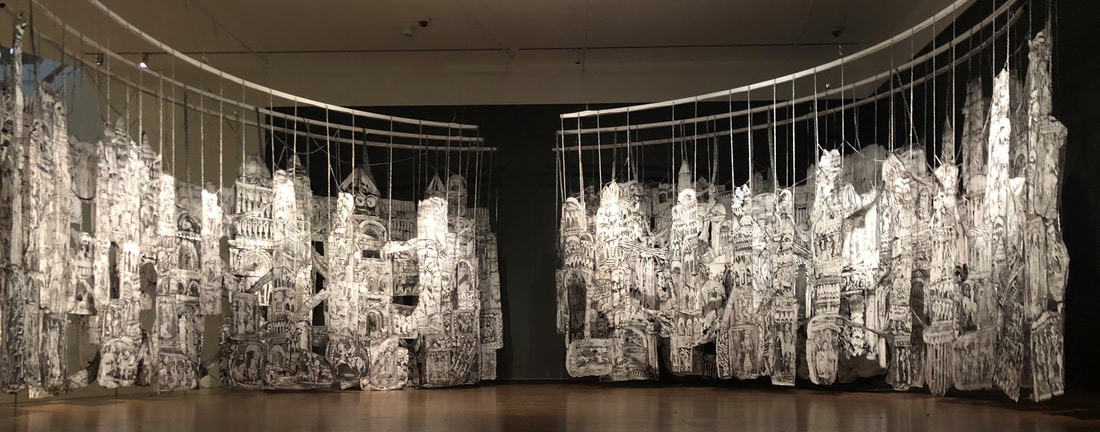 The Initiative in Holocaust, Genocide, Memory Studies invited Kevork Mourad to visit campus in April 2020, but regrettably, we had to postpone when all campus events were cancelled due to the outbreak of Covid-19. Kevork is a Syrian-born, New York-based Armenian artist who works both in 2D and 3D. He produces large-scale installations, ink drawings, illustrations for animated films, live-action sketches to music, and mixed media pieces for visual performances. An overview of images from Mourad’s diverse portfolio can be found on his website: https://www.kevorkmourad.com/ Helen Makhdoumian, HGMS and English graduate student and the mover and shaker behind our annual Armenian studies events and genocide commemorations, had met Kevork and greatly admired his diverse and moving work; we were utterly thrilled both that he graciously accepted our invitation and that we received generous support from MillerComm, Spurlock, IPRH, CWL, English, Fine Arts, Jewish Studies, and REEEC to bring him to campus and to Chicago for a multi-part visit. The wonderful director of the Spurlock Museum, Elizabeth Sutton, was delighted to host an on-site installation and exhibition of Kevork’s work and we had put out a call for art students to volunteer to help set up the exhibit. In addition to a major talk at the Spurlock Museum’s Knight Auditorium entitled “Conceptualizing Migration, Memory, and Place through Art,” Kevork was to have given an HGMS faculty seminar series workshop and a lecture in Chicago at the Illini Center. All of this has now been postponed until next spring so please mark your calendars for Kevork’s talk at the Spurlock at 7pm on 21 April 2021. During the pandemic, I conducted an online interview with Kevork in May 2020: BK: Starting with the pandemic in which the whole world is currently embroiled, you made a series of videos that are very moving and very timely while in quarantine. One of them, “Social Distancing,” features a series of beautifully drawn people socializing at a café who sort of float away from each other as social distancing makes our former physical proximities impossible. Can you talk about that piece? [Links to the videos can be found at the bottom of the page]: KM: That video was my first quarantine piece. While all of us have been forced to live in quarantine and in some ways have been having similar experiences, some groups have felt the consequences of this quarantine more strongly and immediately than others (those who are in the arts, for example), which is why I have the musicians end up the last ones in the frame, playing alone in an empty café. BK: More than most visual artists, your work incorporates music—especially cello—but other musical instruments and genres as well. Can you talk about how you see the connections between the visual and the musical in your pieces? KM: I come from an illustration background (one of my degrees is in illustration) and my grandfather was a troubadour in the Kurdish part of Syria near the border with Turkey. With time I realized that to illustrate music was something natural to me and organic to my work, and I treated my drawing tool like a sort of bow hitting on strings. I’ve often felt like the gestures of my drawing directly translate the rhythms of the music. With this quarantine series, I’ve been treating the videos like visual poems related to the present and inspired by the emotions I receive from the music. Regardless if the music is cello, percussion, bandoneon or duduk, I receive the emotions and feel compelled to put them into the visual dimension. BK: It feels as though part of your artistic practice very consciously involves collaborative projects such as the site-specific installation you were scheduled to produce with art students here at the Spurlock Museum and which has now been delayed until April 2021. Can you talk about the importance of both creating work in a space for a space and also of working in conjunction with other (emerging) artists? KM: For my installation pieces, I have the idea of what the piece is about, but the space in which the installation will be created dictates, by virtue of the size and layout of the room, how the piece will be viewed exactly—from which angles, from what height. And this in turn affects the creation of the piece because in order for the piece to translate the ideas well, I need to know exactly how it will be physically experienced. My installation pieces are large endeavors and would take months to create if I were alone, so having a team of young artists to help in the technical aspects of the creation is essential, but I also received so much energy from the exchange of ideas I experience with other artists. I openly share with them my techniques but also enjoy the inspiration I get from their sharing their own works with me. BK: Much of your work revolves around the traumas of displacement and the Armenian Genocide. And yet so many of your images are of homes, villages, abodes, often very closely stacked together and very imaginatively configured. Is that a way of registering the importance of the very thing which so many people living in exile find hardest to secure? KM: I think that many people in exile seek a sense of community, which can be hard in our societies. I grew up in Aleppo in which we did grow up in spaces where we felt like we lived on top of each other, many faiths together, families and communities stacked up in a city that is full of the history of centuries of all these people living together. My art, in which I recall the architecture and the energy of the city I grew up in, celebrates and is nostalgic for the idea of this multiculturalism and tolerance that is today so easily forgotten or erased. BK: How do the large scale, global, refugee crises impact your work and compare with the experience of Syrian refugees from the civil war? KM: I myself am the son and descendant of refugees. Wherever refugees go they try to bring with them and recreate some of the beauty that they left behind. I am indebted to the heritage and the strength of my ancestors and of the Syrian people who welcomed them and allowed them to thrive in a new place. I can’t speak to the exact experience of Syrian refugees today since I am fortunate not to have suffered what they have, but my heart and therefore my art is full of the courage they have shown. BK: In addition to beautiful, still drawings you make videos. Can you talk about what it feels like to work in so many media and how you perceive the differences between them? KM: Growing up, I felt like you were expected to choose a box and stay within it; you were not encouraged to cross media. Here in New York, in this time, I have discovered that working in different media has been essential to me be able to use whatever tools seem most fitted to the project at hand, the message I need to get across. No matter the medium in which I’m working, I am playing with similar ideas of time and linearity, even while exploring whatever theme the individual pieces address. BK: What has it been like to be in New York City during this pandemic? KM: It has been a curse and a blessing to be in New York at this time. It’s a hub of creativity and it has been devastating to see things so quiet and to know how much suffering is around us. At the same time, the energy of this place is always with us and I feel like more than ever I have a duty to speak up through my art and show that art is always essential. We need the ideas and hope to inspire us forward, even in the midst of a time that feels like it’s about basic survival. Kevork’s videos made during the pandemic: https://vimeo.com/407827624 https://vimeo.com/410025400 https://vimeo.com/399894511 https://vimeo.com/406646654 https://vimeo.com/39826521 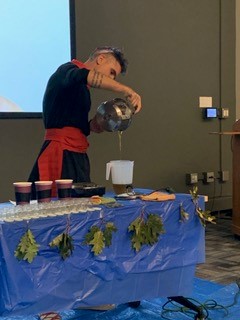 Ethan Madarieta, newly minted Ph.D. in HGMS and Comparative and World Literature, performed his second memory performance piece at the Levis Center on 23 September, 2019. The multimedia performance contained video, music, spoken word, and cooking and evoked memories of “grandma’s medicine,” a mysterious but alimentary substance which we audience members were offered as gifts at the close of the remarkable evening. ~ Brett Ashley Kaplan "Iraganeko Zuloa | Grandma's Medicine" In euskara (the Basque language) zuloa means "hole" but also signifies "cave" - a locus of sustained connection to pre-Colonial Basque culture and history. It also signifies the "holes" where Basque separatists (ETA) detained state hostages for the sake of territorial negotiations. "Iraganeko Zuloa" is a memorial palimpsest from the cave of the past that sustains ways of indigenous knowing and doing through memory. It is a performance of memory that draws together the story of my great grandmother's salve that my family calls amumaren medikunza (grandma's medicine). In Basque mythology it is said "the bees know when the master dies." The bees live at the interstice of our world and the next, offering passage to the afterlife. The "master" refers to the master of the farmhouse, or baserri. "Master" also refers to Basque involvement in the colonization of the Americas. In "Iraganeko Zuloa" I make a play on the death of the master by inserting myself in three positions of "mastery": the baserri jauna (master of the farm), the colonizer, and myself in the present. The performance is in two parts: the video with music and incantations overdubbed, and the final performance where the video is projected over me while I make "grandma's medicine," tell stories of my childhood involving the medicine, and then jar the medicine to be handed out to each member of the audience. The video: Through 38 minutes I am submerged in five gallons of honey, poured from an invisible source above, which slowly begins to suffocate me as it fills my nose and mouth. A txalaparta (Basque percussive instrument) improvisation plays throughout, becoming more and more complex and frenetic. Two repeated "prayers" break through the percussion and tell the story of my family entwined with Basque mythology as recovered by Jose Miguel Barandiaran Aierbe. The live performance: For 38 minutes the video and audio play while I make grandma's medicine on a prepared table with: hotplate, oak leaves (Gernikako areola - symbol of the origins of Basque democracy), small medicine jars, a pitcher, a towel, and three cups full of pine resin, olive oil, and bees wax respectively. I am dressed in oinkari (Basque dancers) regalia I inherited from my father. Between each pre-recorded incantation I tell an improvised story about my childhood experiences with grandma's medicine, its origins, and issues of ethnicity, whiteness, and memory. The end of the performance is marked by the five gallons of honey having been completely emptied over my body, entering my nose and exiting my mouth, eyes covered in honey and half-closed, hair matted against my forehead. The music becomes chaotic and distinct notes are indeterminable. I pour the medicine from the pot to the pitcher and fill each jar with the liquid. It immediately begins to become solid and by the time I am done filling all the jars I am able to distribute a jar of medicine to each audience member, whispering to them, "the memory is the medicine" and "the medicine is the memory." "Iraganeko Zuloa" is a ritual to kill the colonizer in my genealogy and in myself. It is a ritual to sever the historical trajectory of colonial violence through my own memorial path symbolized and embodied through the making of medicine and storytelling. Recognizing that my colonial inheritance will always mark me becomes the realization of the necessity for ongoing practices of critique that lay bare my inheritance of the logics of empire. ~ Ethan Madarieta, Ph.D. |
Illinois Jewish Studieswww.facebook.com/IllinoisJewishStudies/The Initiative in Holocaust, Genocide, and Memory Studiesis an interdisciplinary program based at the University of Illinois at Urbana-Champaign. Founded in 2009 and located within the Program in Jewish Culture and Society, HGMS provides a platform for cutting-edge, comparative research, teaching, and public engagement related to genocide, trauma, and collective memory.
Archives
November 2022
Categories |
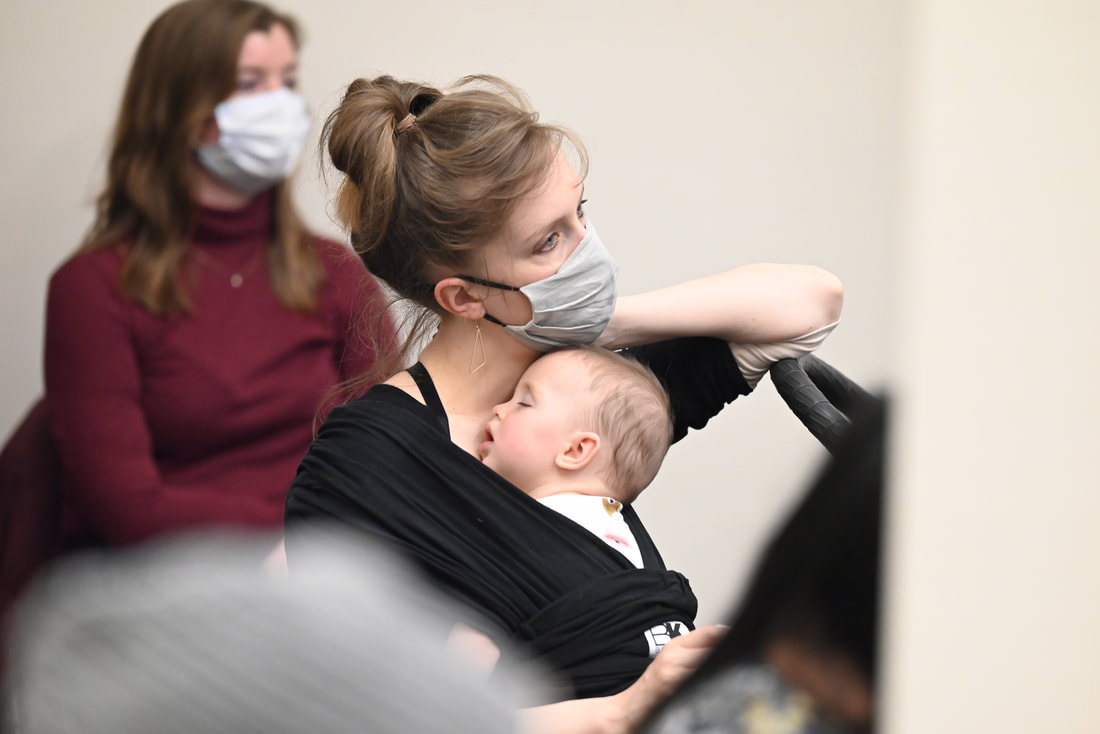
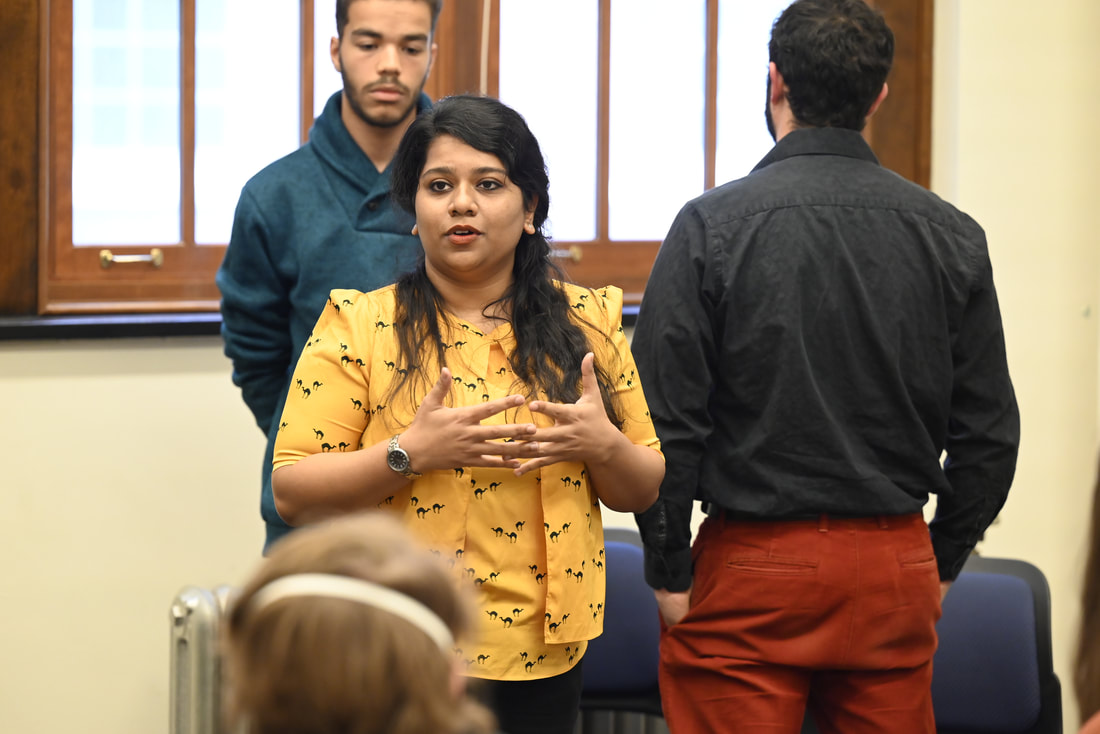
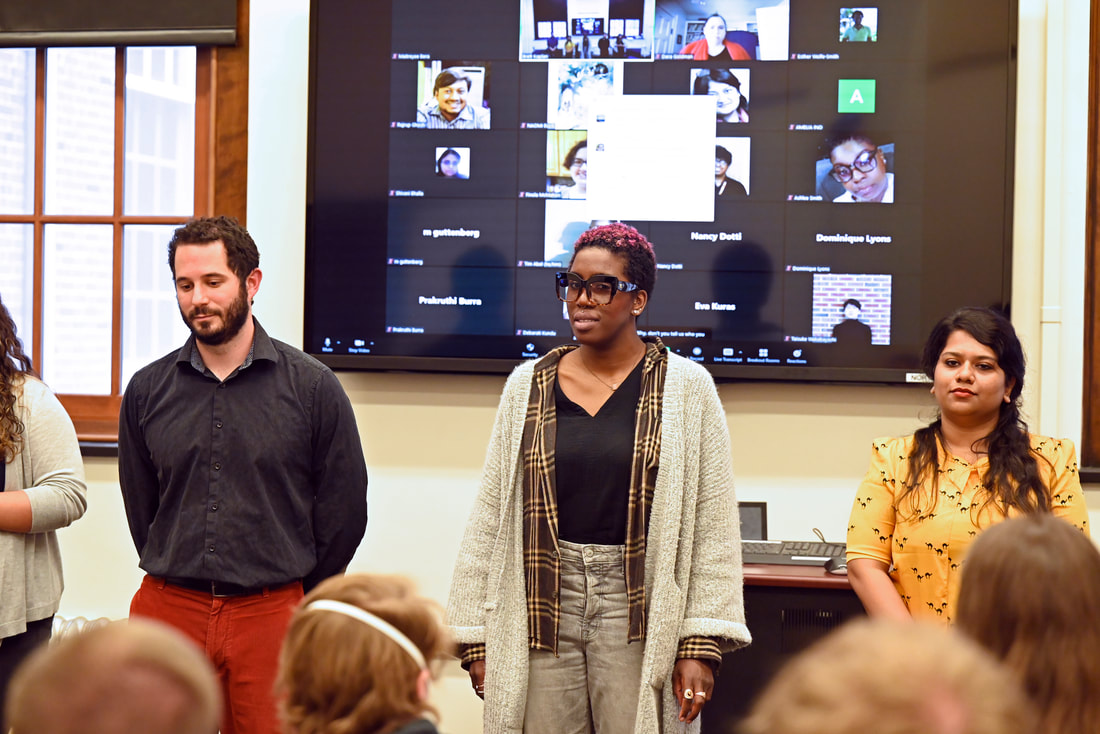
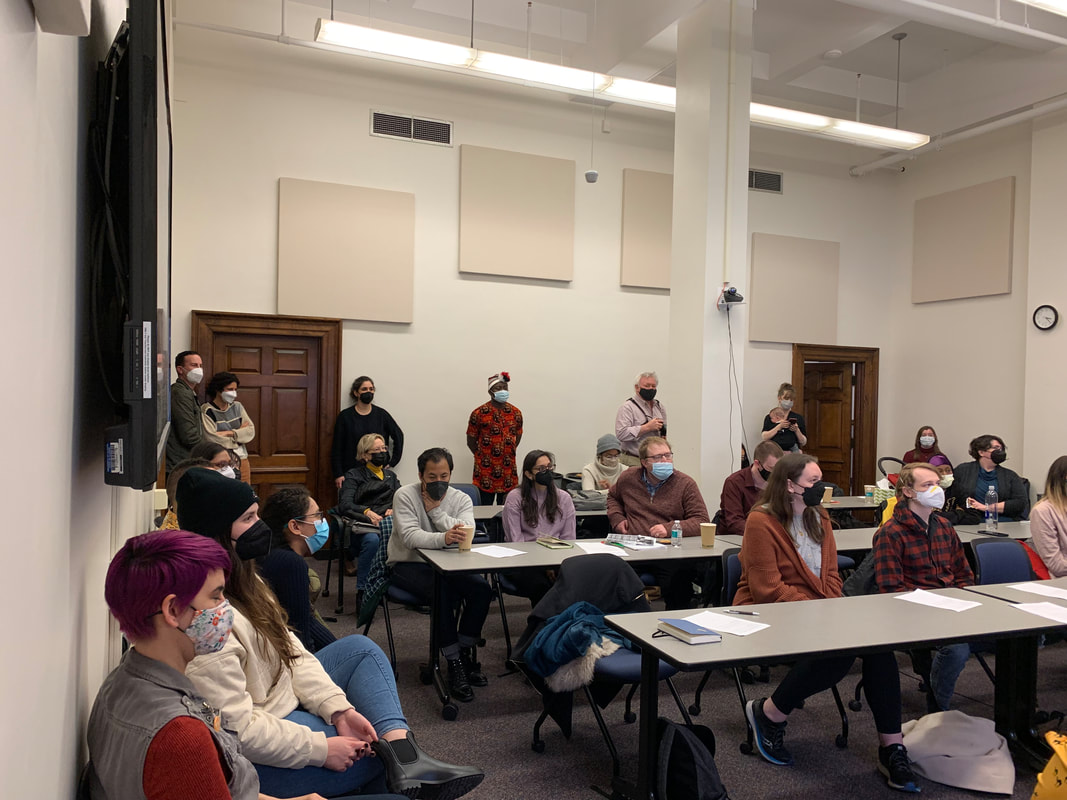
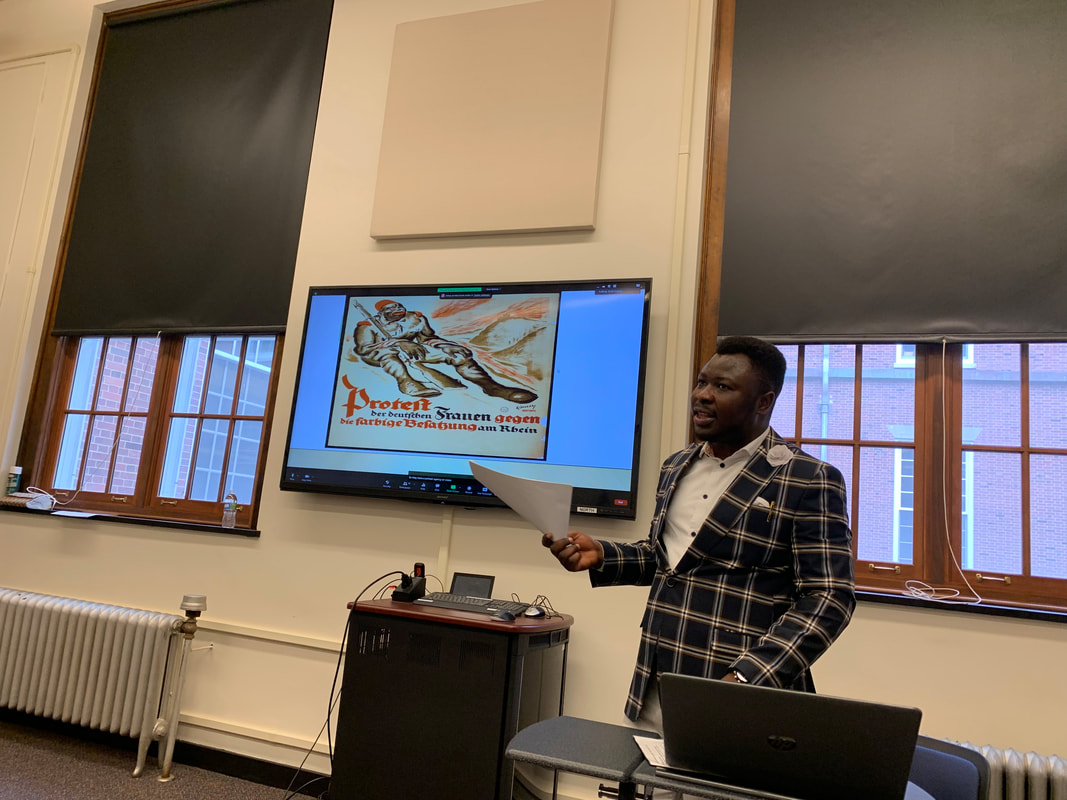
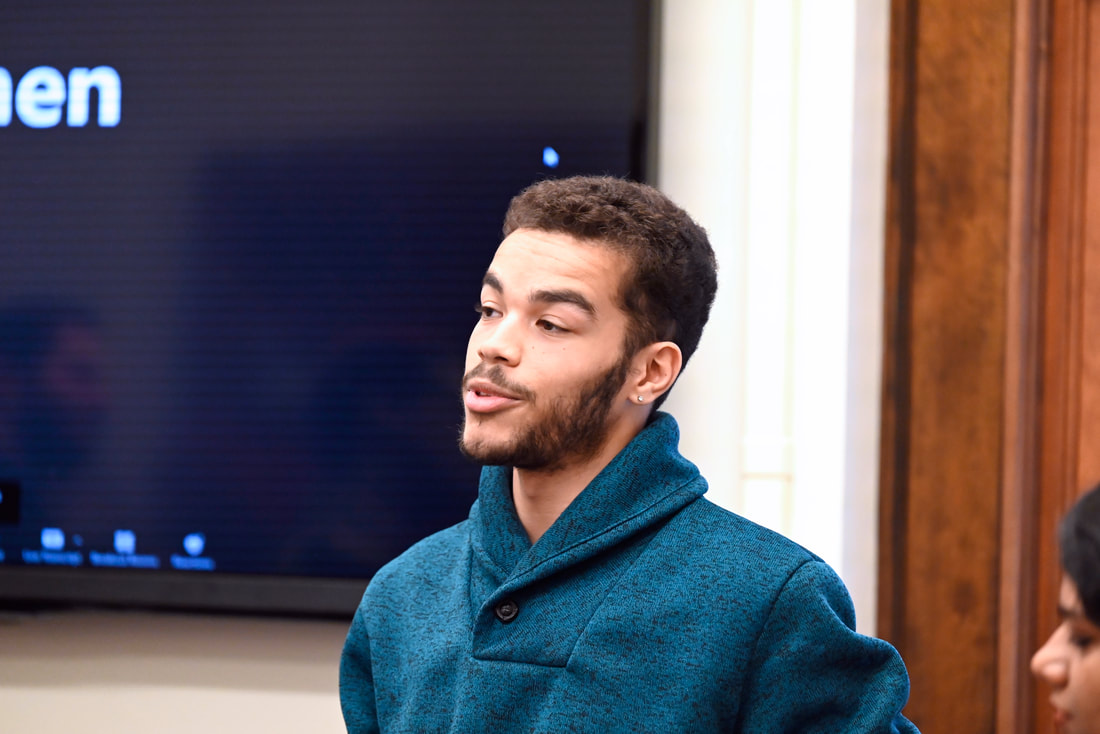
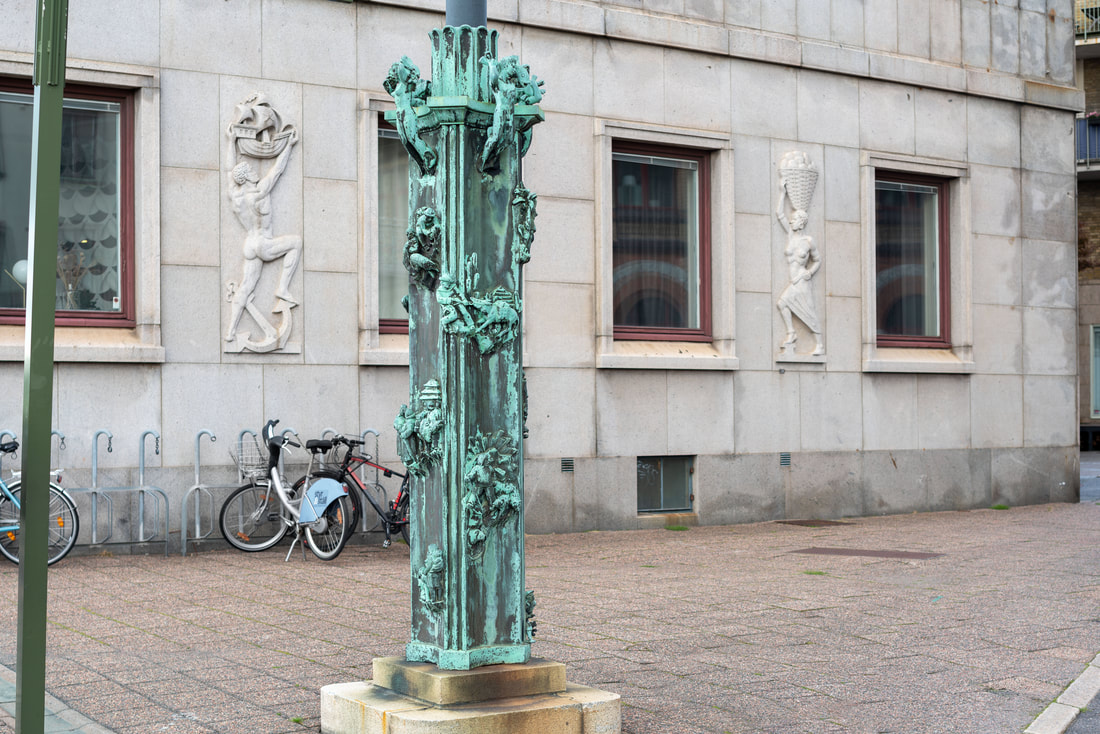

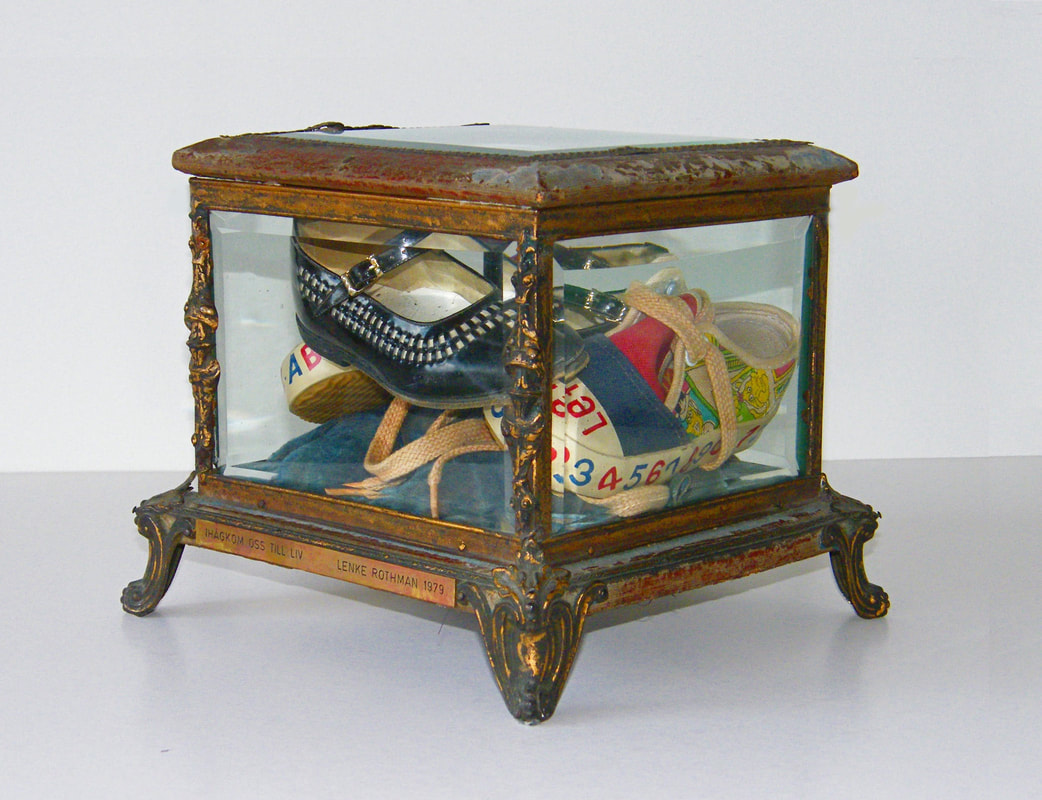
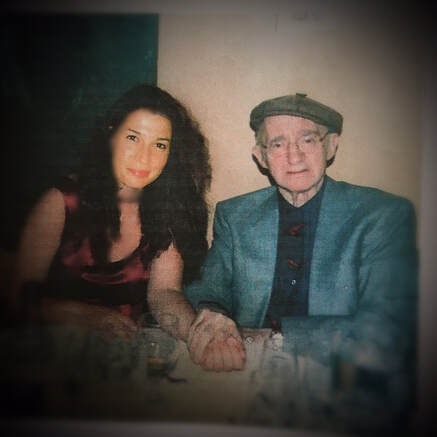
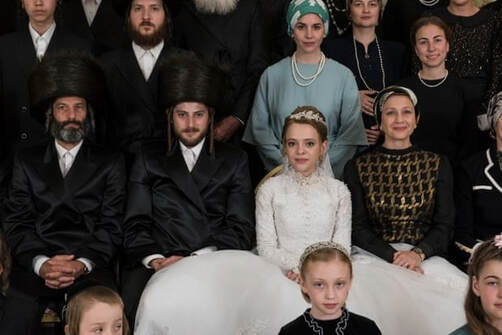
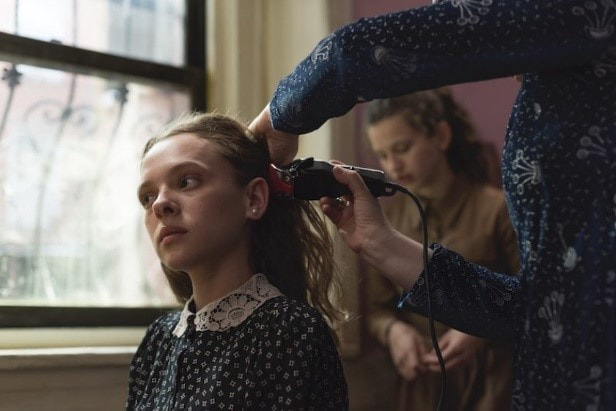
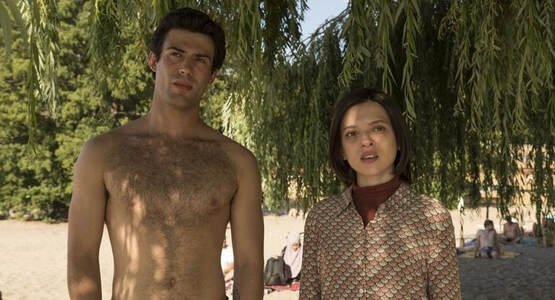
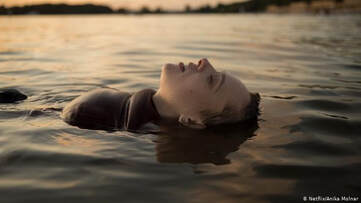

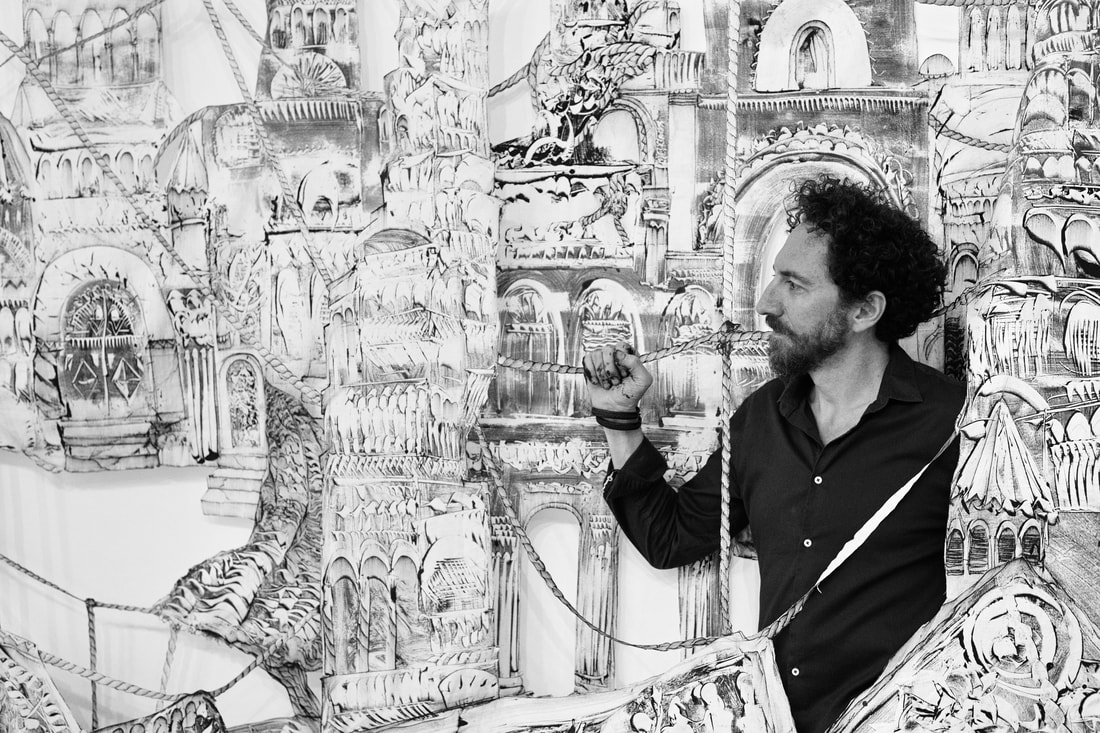
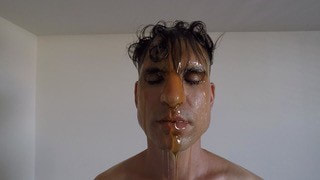
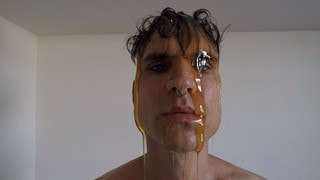

 RSS Feed
RSS Feed
